Quantum Leadership
The Appleton Greene Corporate Training Program (CTP) for Quantum Leadership is provided by Ms. Feinholz Certified Learning Provider (CLP). Program Specifications: Monthly cost USD$2,500.00; Monthly Workshops 6 hours; Monthly Support 4 hours; Program Duration 24 months; Program orders subject to ongoing availability.
Personal Profile
For over 35 years, Ms. Feinholz MBA CLP has consulted to the leaders and management teams of evolving businesses, helping them improve their results and execute their business more profitably and productively. Her consulting services initially focused on helping these business leaders and owners learn how to set clear vision and strategies and expanded to improving how to operate their businesses by applying sound fundamental business principles throughout their organization.
Through her management consulting, executive coaching and facilitation, Ms. Feinholz transfers the tools and skills used in Fortune 100 companies to privately held and publicly traded businesses. In addition to her work with UCLA Medical Center, Avon Products, Walt Disney Imagineering, the Los Angeles Metropolitan Transit Authority Mattel and WorldVision, she has consulted to over 250 small and mid-sized companies as they grow, change strategy and create new value. Her clients have included manufacturers, software developers, professional services Erms, start-up entrepreneurs and executives advancing their careers.
Ms. Feinholz‘s consulting activities include: working with management to clarify their vision and goals; identifying the new culture being targeted; prioritizing management decisions through planning activities; developing communication vehicles to create buy-in among management and employees, redesigning business processes, structures and organizational relationships and effectiveness, and designing and implementing leadership and performance management systems that help the organization get the greatest value from everyone’s efforts. Her work across the organization includes: leading internal teams in their participation in change efforts; facilitating implementation; and conducting training and coaching to transfer management methodologies, processes and skills to her clients.
Ms. Feinholz’s knowledge and experience in various technical, managerial and executive positions drew her to recognize that one of the key missing elements throughout her clients’ organizations was leadership adeptness.
As her client base grew, Ms. Feinholz became aware that many business leaders and owners, regardless of the industry or size or type of company, were not preparing themselves or their businesses for their eventual exit from their roles. She further determined that 3 Factors placed her clients’ organizations at risk.
First, businesses that had key technical and management functions optimized still neglected to put attention on installing the leadership bench strength required to stabilize an organization beyond the tenure of who was currently in leadership roles.
Second, whether an individual transitioned their role at the timing of their choosing or due to unexpected opportunities and events, every leader eventually progressed to more complex and strategic responsibilities. At times that meant they exited the company itself. Thus, the business needed to be prepared for succession events regardless of the circumstances.
Third, in tracking the information shared through employee exit interviews she was able to determine the effects the lack of strong leadership had on company culture, employee morale, and employee retention. She uncovered the fact that employees no longer see the C-Suite as the sole agents of leadership in the organization but expect it to be present and experienced more intimately throughout the organization.
Ms. Feinholz decided the best way to install those elements was to design and deliver a leadership development program that would effectively install the QL principles and practices at any level of title and arena of responsibility. That meant taking the best techniques of leadership theory, the insights of modern high-performance leaders, and incorporating adult learning followed by simplifying what was learned and systematizing it so that it can now be learned and installed in a broad spectrum of any organization’s business leaders.
The Quantum Leadership (QL) concept began in 2002 and has been repeatedly tested, implemented and refined for twenty years across industries and company roles.
To request further information about Ms. Feinholz through Appleton Greene, please Click Here.
(CLP) Programs
Appleton Greene corporate training programs are all process-driven. They are used as vehicles to implement tangible business processes within clients’ organizations, together with training, support and facilitation during the use of these processes. Corporate training programs are therefore implemented over a sustainable period of time, that is to say, between 1 year (incorporating 12 monthly workshops), and 4 years (incorporating 48 monthly workshops). Your program information guide will specify how long each program takes to complete. Each monthly workshop takes 6 hours to implement and can be undertaken either on the client’s premises, an Appleton Greene serviced office, or online via the internet. This enables clients to implement each part of their business process, before moving onto the next stage of the program and enables employees to plan their study time around their current work commitments. The result is far greater program benefit, over a more sustainable period of time and a significantly improved return on investment.
Appleton Greene uses standard and bespoke corporate training programs as vessels to transfer business process improvement knowledge into the heart of our clients’ organizations. Each individual program focuses upon the implementation of a specific business process, which enables clients to easily quantify their return on investment. There are hundreds of established Appleton Greene corporate training products now available to clients within customer services, e-business, finance, globalization, human resources, information technology, legal, management, marketing and production. It does not matter whether a client’s employees are located within one office, or an unlimited number of international offices, we can still bring them together to learn and implement specific business processes collectively. Our approach to global localization enables us to provide clients with a truly international service with that all important personal touch. Appleton Greene corporate training programs can be provided virtually or locally and they are all unique in that they individually focus upon a specific business function. All (CLP) programs are implemented over a sustainable period of time, usually between 1-4 years, incorporating 12-48 monthly workshops and professional support is consistently provided during this time by qualified learning providers and where appropriate, by Accredited Consultants.
Executive summary
Quantum Leadership
The two-year Quantum Leadership Program (QLP) takes participants from the phase of ideas of and techniques for leadership influence, through practical application, to personal customization which results in the enduring use of future proofing Leadership processes and practices on a daily basis throughout their organization.
The Quantum Leadership Program is anchored by three critical philosophies.
The first is to design for the leadership strategy that Indra Nooyi, past CEO and Chairman of PepsiCo, refers to as “Future Proofing” the organization.
The second is to leverage the definition of ‘quantum’ in leadership’s tactical execution – the smallest amount of energy or effort required to create the desired interaction or result.

The final philosophy is that leadership is not synonymous with management. Organizations are comprised of multiple levels of focus, from the technician whose attention is on tactical execution of the activities of the business, to management which plans and steers and problem-solves that execution, to leaders whose focus must be on the higher-level considerations of vision, strategy, overarching corporate systems, complex paradox management, and external opportunities and threats to the organization.
By engaging the broadest range of roles in the organization in the Quantum Leadership Program the organization establishes a culture in which long-term repeatable leadership practices that produce excellent employee engagement and retention along with the cultural responsiveness and stability to last for decades to come.
The QLP fuels company Future Proofing by leveling up Leadership through the organization in a 4-phase structured process that drives better outcomes in employee engagement, performance, and retention.

Where It All Began
The term ‘Leadership’ is bandied about in daily conversation throughout business and the broader society.
For millennia the term referred to the individual with greatest economic dominance or political, military, or religious influence and power. Leadership was reserved for those in control of wealth and military might.
The leadership style experienced by those around them might be authoritarian or charismatic. There was little need for self-examination and adaptation if it held no interest for the leader.
Thousands of years ago, Plato created his first academy. He believed that leadership must be trained so that it could be embodies in philosopher-kings. Socrates was a lone voice in pointing to alternative considerations of leadership.
The Industrial Revolution gave birth to a production and service sector of society. Individuals in control and influence in feudal systems expanded their control into this new sector. The forces of their power and influence gained traction inside organizations that employed individuals and teams. Added to these forces were systems of control. These three dominating forces were embodied first in owners of businesses be they the wealthy, or the merchants who managed them. While industry expanded, they were delegated down into a new management class of employees.
Throughout recorded history, from the dynasties of Egypt on to the modern era, as work became more sophisticated, the managerial class expanded to steer the work of the technical doers of the work. Emphasis was placed on the management systems and behaviors inside organizations whether organizing the shipment of stone blocks to build pyramids or factory workers filling spindles with yarn. The topic of leadership was only of interest in military matters or rulership.

The Dawn of Considering Leadership
It was only in the twentieth century that leadership became a topic of general conversation that expanded beyond the military to organizations. University-based professors of human and organizational behavior adopted the topic and sought a deeper understanding that might translate into actionable insights.
Notable among these university-based efforts was Warren Bennis, long-time professor at the University of Southern California. He pointed out that the standard criterial for choosing top-level managers were technical competence, people skills, judgment, and character. However, he judged that effective leadership was overwhelmingly the function of character, followed by judgment. His research showed that subordinates most wished for vision and direction, trustworthiness, and optimism which bred hopefulness.

While many professors, writers and commentators focused on character traits and charisma, Bennis distilled his research on the most effective leaders into four core competencies they embodied: the management of attention, meaning, trust and self. Add to this strong communication skills and clarity that cut through chaos and enabled followers to see a clear path and get into action on it. He considered these leaders’ energy and actions created cultures in which that leadership was felt throughout the organization.
In his most revered book “On Becoming a Leader,” published in 1989, Bennis shook up a generation of executives by casting a spotlight on what he perceived as a growing wave of failed leadership.

In the decades that surrounding his work, many scholars sliced and diced the observed behaviors of leaders and constructed theories and published tens of thousands of pages of research, articles, and books. Some focused on The Great Man Theory, others on Trait Theory, Behavioral Theory, Situational Approach, Skills Approach and Path-Goal Theory. Still others looked at Systems Theory and Thinking, the Theory of Constraints, and Transformational Leadership.
Each model tried to reduce Leadership to a streamlined understanding, and each had their own strength in sharpening attention on particular areas of leadership involvement and influence.
Simultaneously their colleagues were examining the topic of motivation for insights on how influence was experienced. Considering the complexity of individual needs and motives, various theories were used to explain the concept of Motivation. Among such theories were Maslow’s Hierarchy of Needs, Herzberg’s Two-Factor Theory/ Motivator-Hygiene, McGregor’s X and Y Theories, David McClelland’s Human Motivation Theory, The Equity Theory, Value – Percept Theory, Vroom’s Expectancy Theory and Porter-Lawler Model.
These motivation theories, though they apply to individuals, also apply to groups as individuals come together to form groups. The reality is that motivation becomes more complex within teams because individuals in the group often have differing personal needs that will motivate them to give their best to their endeavors. If this is not well managed by leadership, some members of the team underachieve while others excel. It became the responsibility of leadership to ensure that every team member was well motivated to contribute to achieving the team’s objectives. Even if leadership did not come from the official leader, some members of the team would assume the leadership role of ensuring that other members of their team would be well-motivated.
The Shortcomings and Blind Spots of Theories Revealed
The challenge of theorizing is that is has always been after-the-fact retrospective analysis looking for cause and effect from an observer stance. None of these authors developed the practical tools and applied them for themselves in complex culture and ongoing operations of a business.

Ideas and theories in and of themselves are a distillation and simplification that misses the complexities of organizational life that a leader must solve. They need to have relevance inside organizations and be made practicable. For instance, Transformational Leadership is a style of leadership that creates focus throughout an organization by communicating a clear vision of what needs to be accomplished. Vision becomes the driver behind leadership efforts and underpins efforts at motivating people throughout the organization to accomplish the activities and improvements needed. A useful element, but insufficient in and of itself for the fullness of what leadership requires.
As Indra Nooyi pointed out, great leaders and their business need to be prepared for transition events regardless of the circumstances.

4 Forces Changing Organizational Circumstances
The External Force of Technology
In 2000 the topic of ‘tele-commuting’ was being tentatively raised by a few professionals with their bosses. The idea that some portion of an employee’s work could be done from home rather than at their ‘place of work’ raised issues around how to evaluate if the productivity of that employee met the levels obtained when they were on-site.
The choice was at the discretion of the management of the organization, with performance criteria set and agreed to between the manager and their subordinate. In fits and starts various professions experimented with and used technology to enable part-time and full-time remote or virtual work.
By December 2019 the following trends were in place in American corporations:
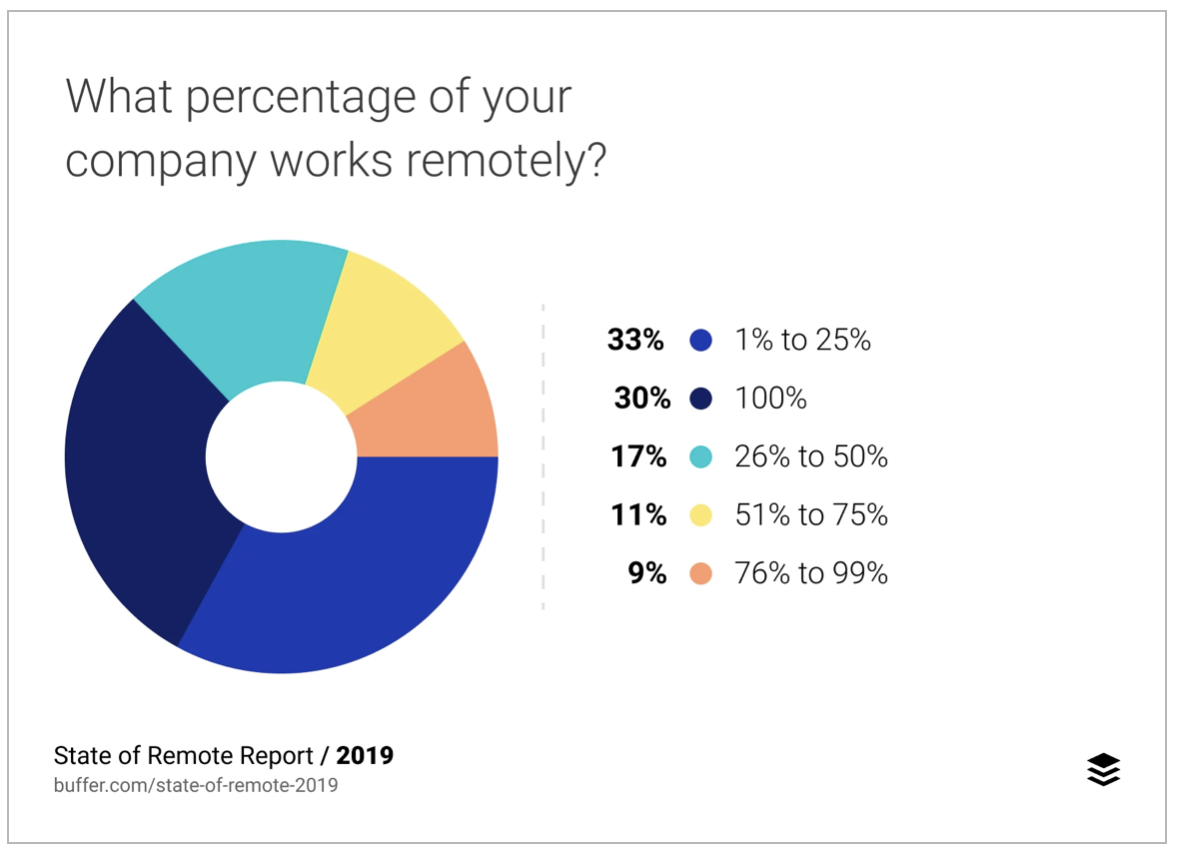
• Before the 2020 start of the pandemic, only 6% of the US employed worked primarily from home and about three-quarters of workers had never worked from home
• In May 2020, over one-third of the employed worked from home due to the pandemic – a close match for pre-pandemic estimates of ‘the share of work that could be done remotely’, theoretically, in the future
• Office-based business and professional occupations were most likely to implement remote work, with three-quarters of such employees working from home early in the pandemic
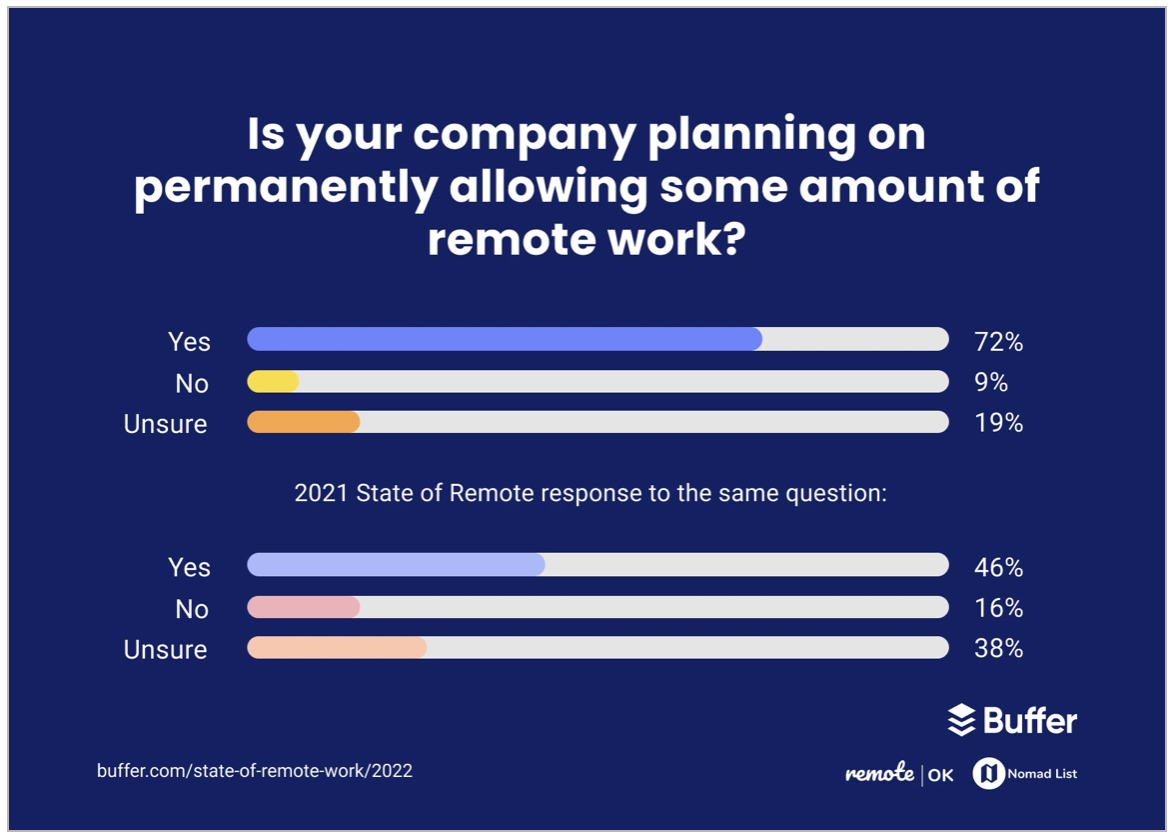
By 2022 there was a distinct shift in work-at-home trends:
• Most workers and employers report they expect to permanently implement more flexible remote work opportunities after the pandemic
• Increased remote work will negatively affect businesses that support commuters and business travelers, especially in transportation and leisure and hospitality
• Remote work will be available to the services sector industries and employees, but not to manufacturing line workers
As politicians forced as much as of the workforce to be sent home and kept there for an undetermined duration it was only in 2022 that the newest trends could be considered.
The turmoil of 2020-2022 created stress fractures in the relationship between employees and their managers and teams.
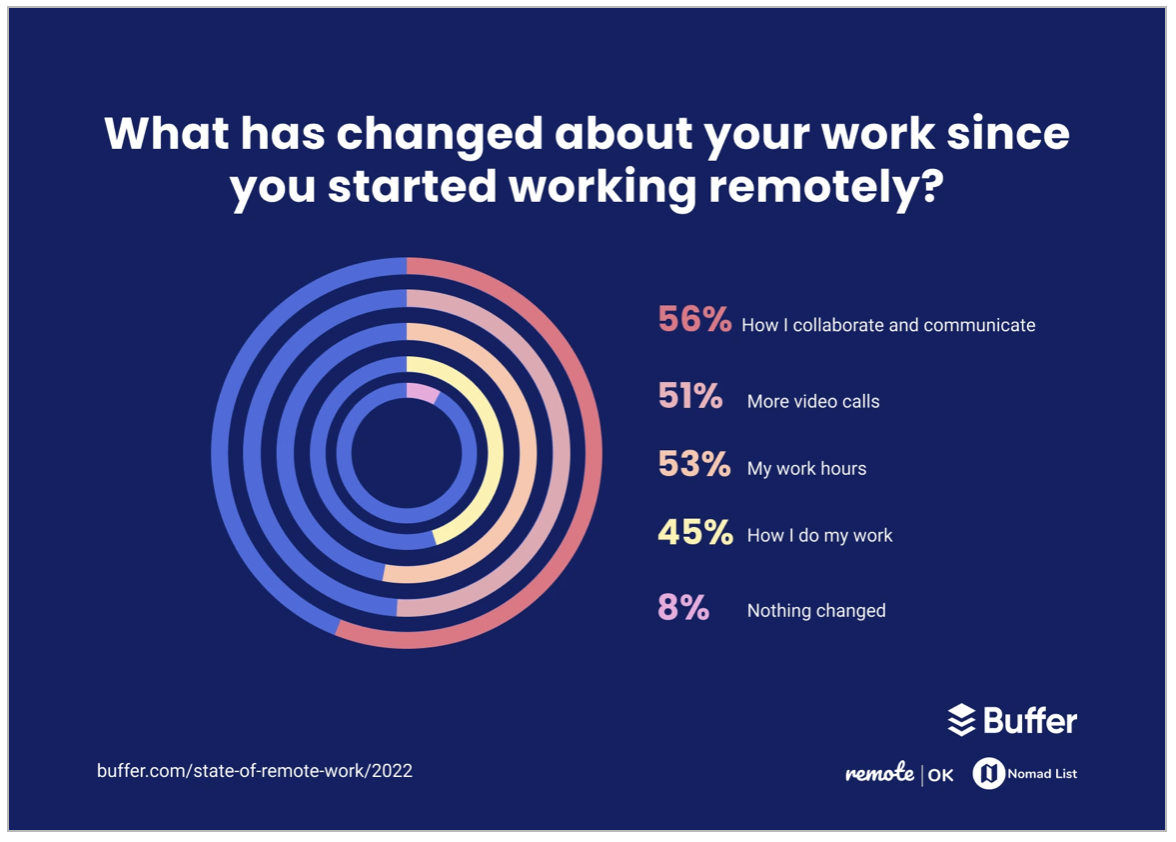
Existing and novel technology enabled continued communication, and the political decisions forced internal adaptation of technology for both communication and for the remote execution of work overall. However, some industries thrived, and others suffered through recurring crisis-based pivoting and redesigning of entire business models.
Use of time changed radically as leaders, managers and employees struggled to make the new models work.
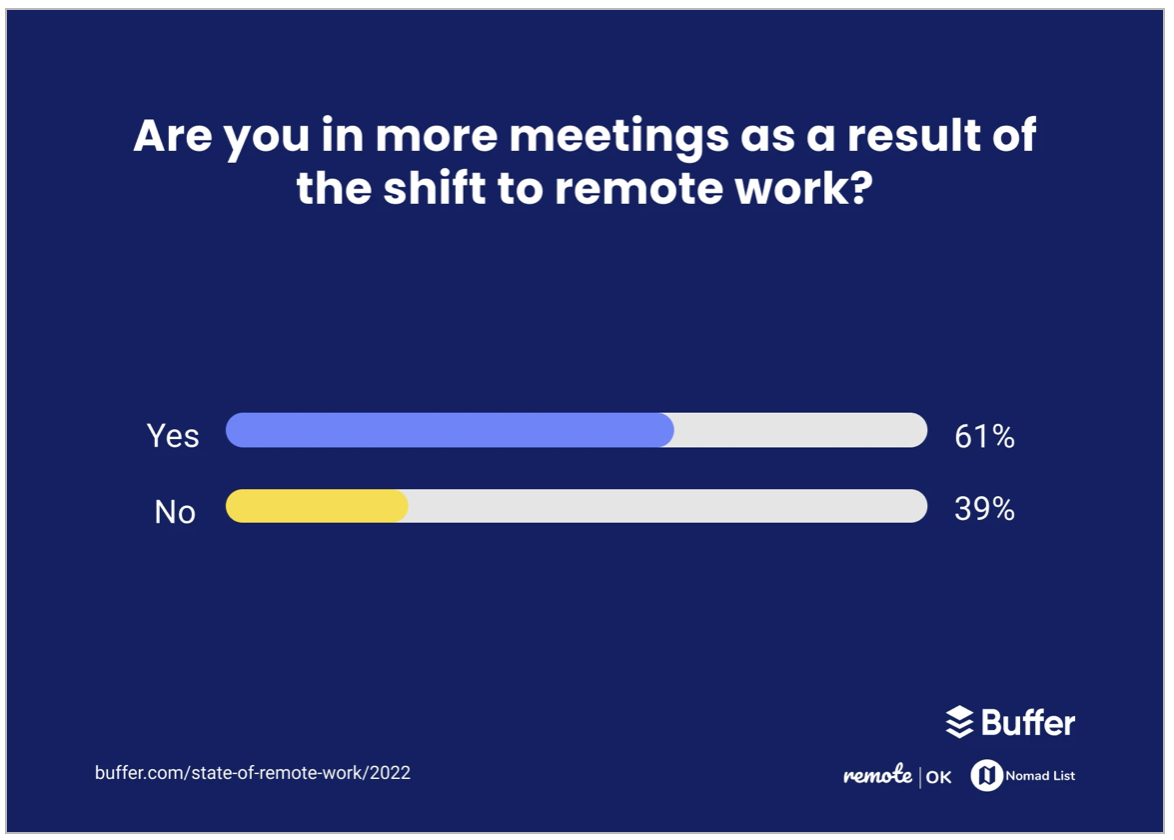
Despite that increase in meeting interactions, research by Gallup and PEW uncovered one of the most important risks to corporations:
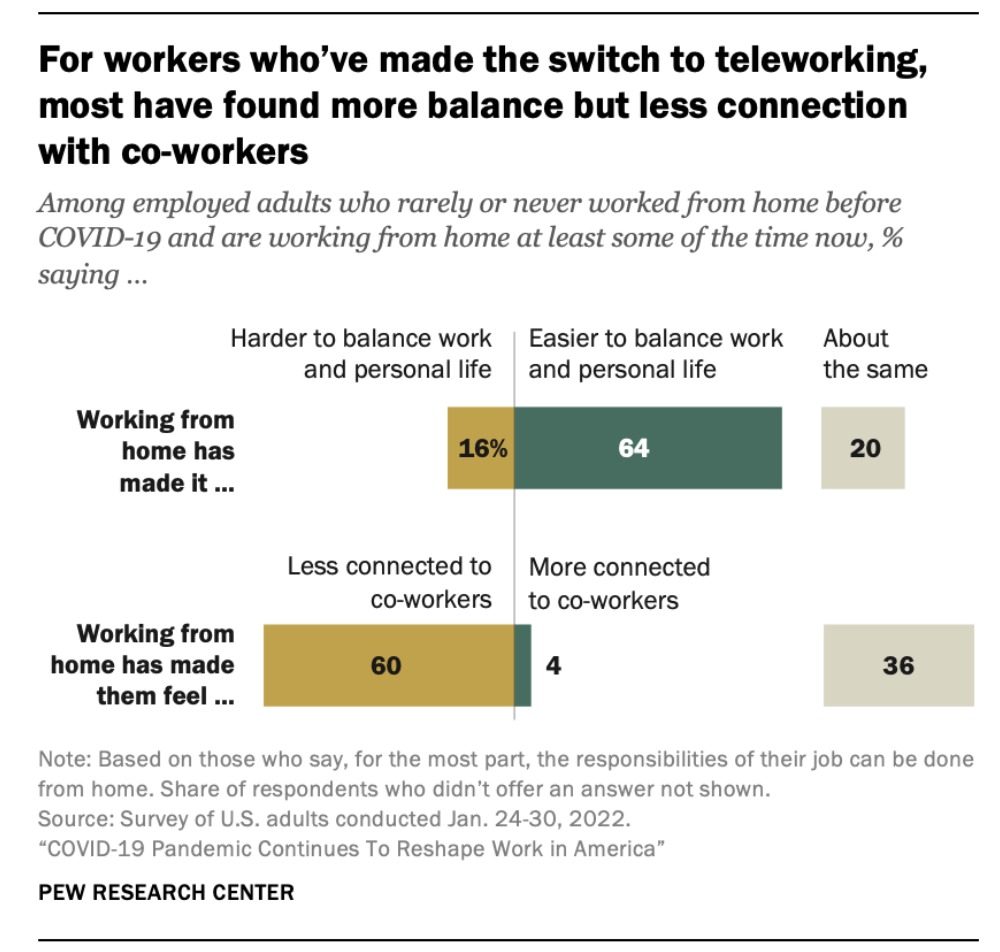
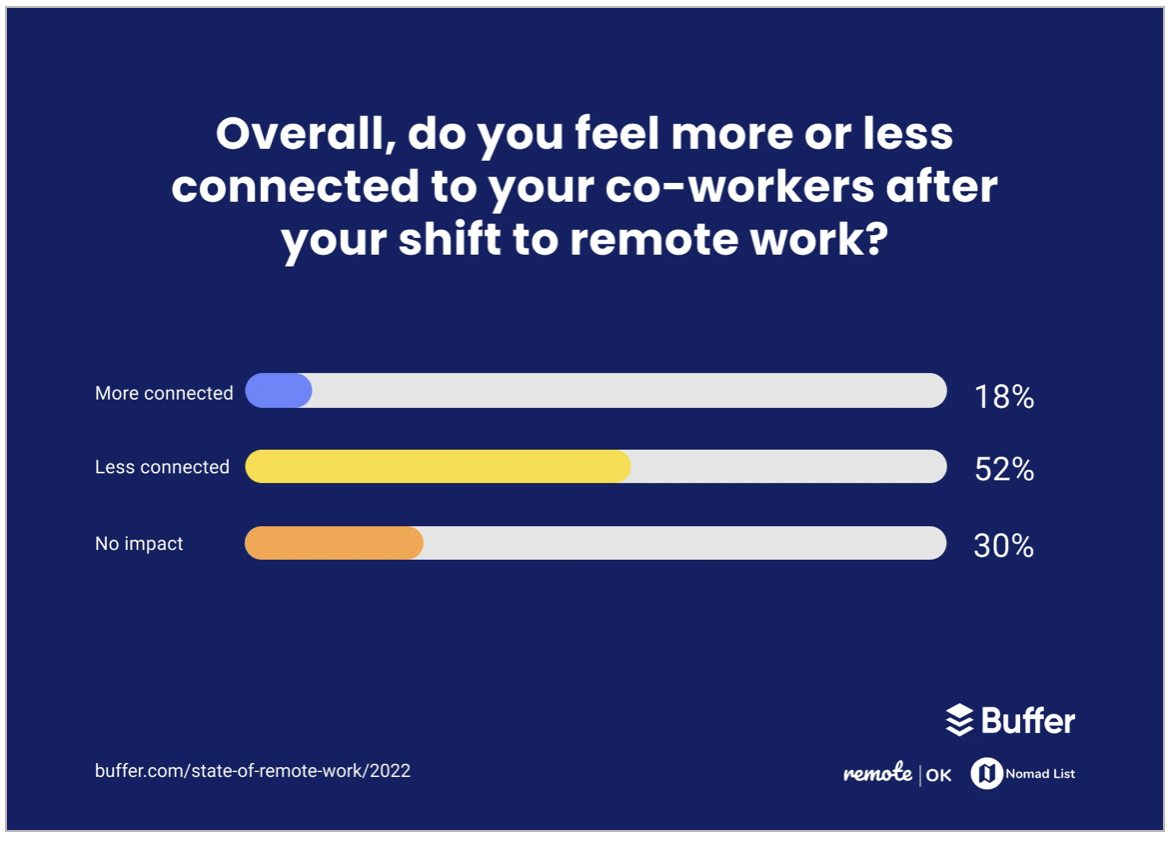
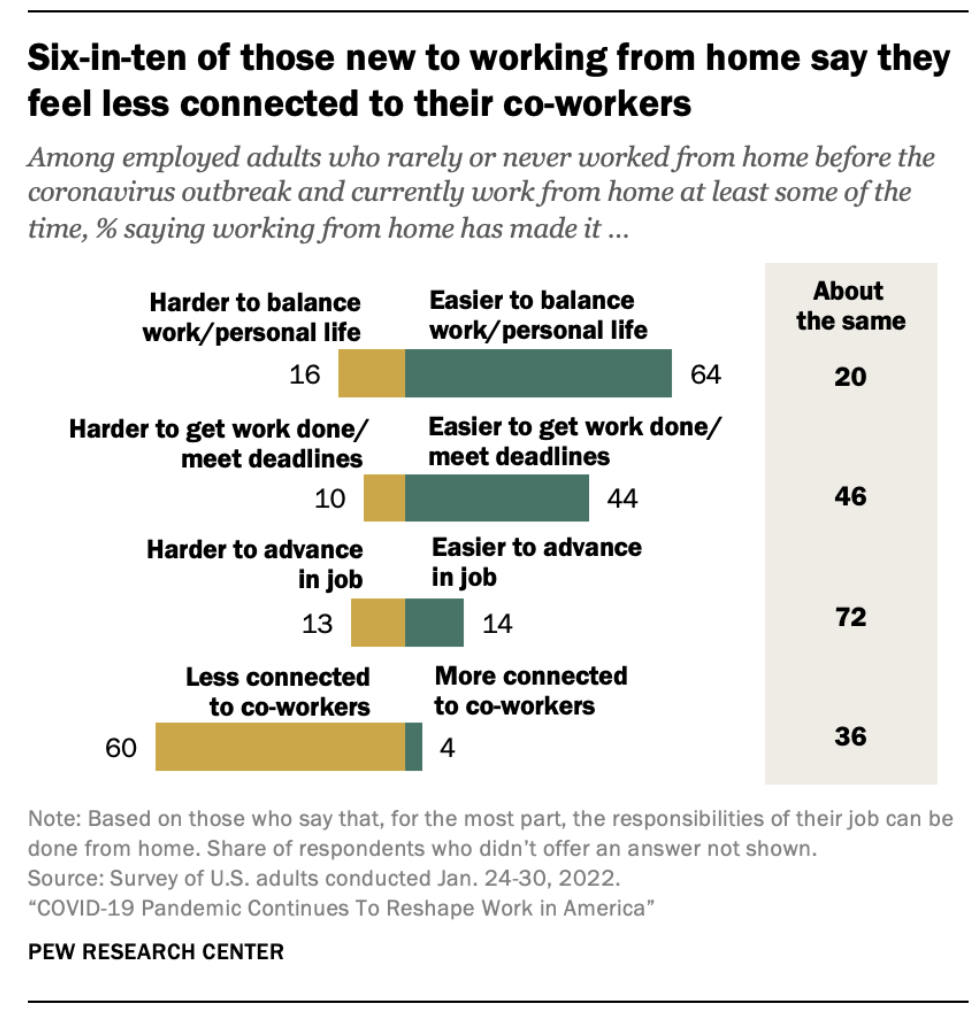
Leaders were immediately challenged to rethink their use of technology in order to maintain influence of employee morale, motivation, stress management and organizational productivity. Simultaneously, employee concerns about health and safety are delaying any permanent decisions about ‘where’ work will take place.
It is self-evident that the work that could be remotely located is found among the professional staff roles rather than line production.
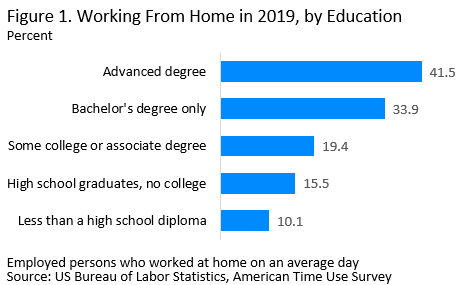
The result – a permanent Hybrid work model of work-from-home combined with on-site work is here to stay and will need to be grappled with by leaders of every generation.
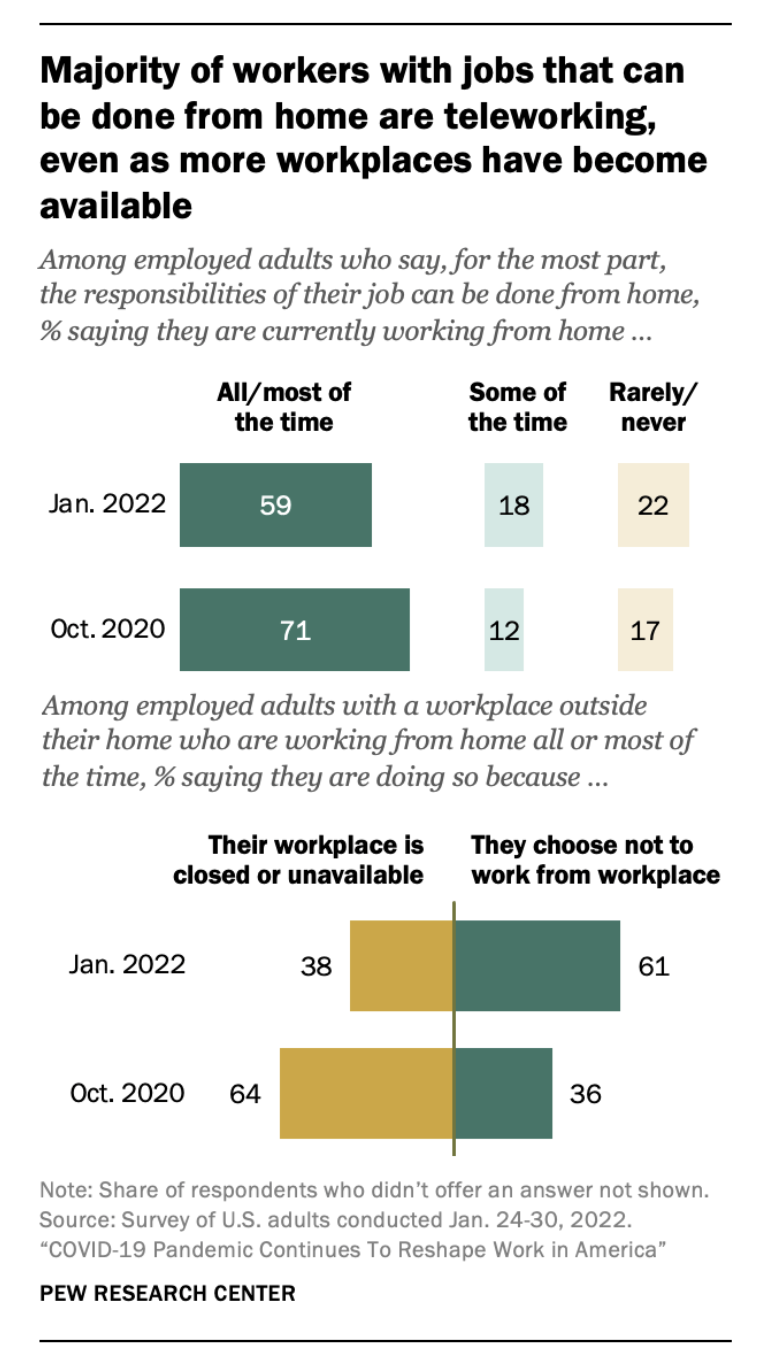
If this were a single generation being affected, it would be enough to contend with. In fact, it is a deeply complex issue due to the forces of demographics.

The Internal Force of Technology
Various technologies have had between forty and one hundred and sixty years to transform the expectations of roles in organizations.
As technology advanced, the practicalities of work changed. A perfect example was experienced in manufacturers and professional service firms alike. In the 1950s through 1980s, managers had a secretary to manage inbound and outbound communication and mail. They took down their boss’s dictated communication and turned it into type-written materials. With the invention of electric typewriters and word processors, the secretary’s process sped up and time was freed up for additional responsibilities. As the manager started typing their own communiques the secretarial role evolved into one of assistant and business analyst.
As desktop computers became widespread, the manager often did much of their own analyses. The desk outside their office was vacated. As a result of technology’s next evolution, managers added handling their own inbound and outbound communications and meeting calendaring and email management to their daily load.
Simultaneously, four types of organizational teams developed, namely ongoing project teams, ad-hoc project teams, ongoing production teams and ad-hoc production teams demanding manager attention.
In the public arena, technological advances accelerated communication from postal transmissions that took a week or more in transit to delivery at nearly the speed of thought.
However, as communication has become accelerated, one critical side effect has been the loss of thinking time, analysis and problem-solving which remains the responsibility of organization management and leadership.

Today, many organizations of hundreds of team members have managers and leaders acting as their own secretary day in and day out.
Internal technological developments have instigated changes in roles throughout organizations in remarkably short spans of time.

The External Force of Demographics
In 1996 the Lockheed Corporation was confronting the fact that a majority of their expert workforce was reaching retirement age, and in a few short years would be walking out the door. In addition to the high cost of replacing a worker, there would be the significant problem of losing the experience and information uniquely possessed by that person.
When replacing retiring, experienced workers with younger, inexperienced ones, a company is losing an incredible amount of knowledge and experience, known as “knowledge capital.”
Looking at the demographic curve even a decade ago provides immediate insight to the magnitude of pending knowledge loss across industries.
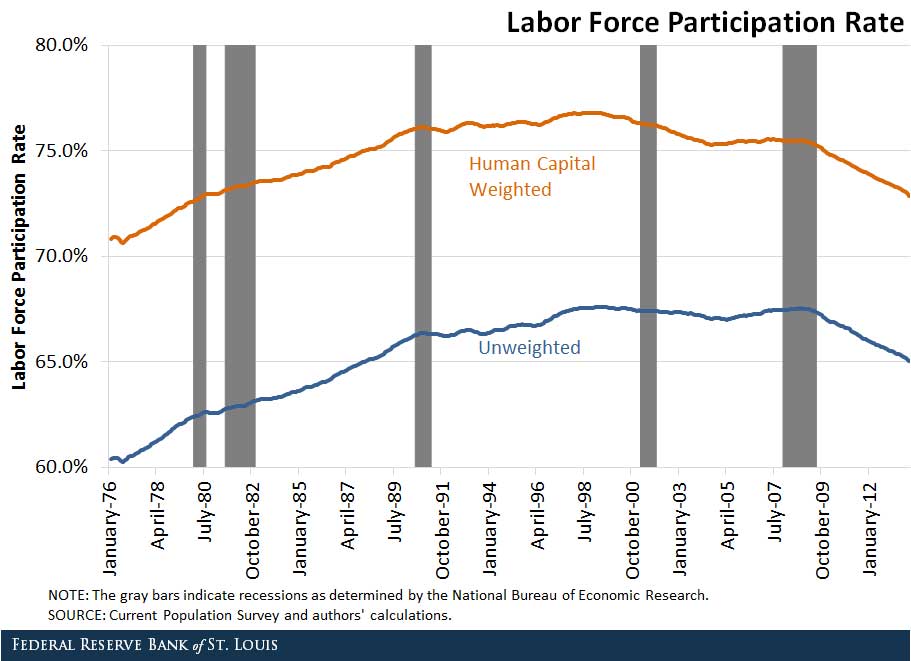
Even those people entering the work force the past decade cannot make up for the brain drain and experience drain that is creating tight labor markets across industries.

Experienced employees have inside knowledge of how an organization works, including how to deal with both complex problems that arise and the internal, institutional bureaucracy. They have developed versions of leadership skills. They have detailed knowledge of customers and prospects. These experienced Bay Boomer employees have contacts and relationships they have developed and built over the course of their careers. They have product familiarity and knowledge.
While to some degree Gen X employees would bridge the gap to Gen Y, there would never be enough of them with enough sheer experience to do it fully.
A new era of ‘knowledge transfer’ became a critical topic for corporate leadership that spanned more than twenty years across industries as the Boomer generation’s oldest members stepped out of the workforce. Leaders must create an environment in which this cooperative knowledge sharing can exist.
Replenishing talent was more than just a numbers game. Leadership was suddenly confronted with needing to lead FOUR separate generations of employees with completely different psychographic composition and values and motivations.
Unless a company is a solo-preneur shop, all work happens through relationships between the staff of organizations.
The intermixing of 4 generations who are motivated entirely differently triggered continuous stress on the company’s stability.

Their work ethics differ enormously as well.

Leadership was forced to undergo a radical change out of any remaining command and control attitude into one of hyper-communicator, shepherd, and pied piper. Leaders reported needing to keep changing hats depending on which generation they were communicating with and being stretched thin in trying to craft single messages that aligned everyone’s attention and motivation.
****Fig 22 too blurry****
All of this points out the radically different values, social attitudes, and motivations at play in public and in the workplace between the four generations.
Leading such a diverse group is unprecedented, and leaders need to understand the demographic realities as well as the generational needs of each cohort.
The recent United Nations Joint Staff Pension Fund report summarized research findings from around the world.


And as the generation that is rising through the organization it’s important to understand what Gen Y values:
Gen Y is very individualistic and does not believe that “one size fits all.” They more likely feel “my size fits me.” They are tech savvy, diverse, and understand the global marketplace in ways that generations before them did not. They understand their company’s customers and think globally. They have strong self-esteem, are ambitious and look for ways to contribute, not sit on the side-lines. They are research-oriented problem-solvers.
With all of that said, Gen Y also values collaboration and teamwork. Some of the same tools discussed previously also allow Gen Y to communicate and collaborate with others instantly.
Surveys Neil Howe and William Strauss conducted show an overwhelming majority (72 percent) of Gen Y wants to be on a productive team. Most responded that collaboration produces a better work product. Even when working alone on a project, many Gen Yers (62 percent) will reach out to their network for input when appropriate.
All of this makes them a potential powerhouse resource for any organization and simultaneously increase the ongoing management stresses as the make rapid exit decisions when feeling bored or under-acknowledged.
When previous generations took their first jobs, they were looking for a greater degree of job security; they could envision working with that company for ten or more years, and possibly assumed they would retire from that same company. However, because of their increased freedom and lack of familial responsibilities, Gen Y has a different mindset about commitment to an organization. They do not sign on for life. They have a much shorter horizon and would be happy with a one- or two-year work experience. Many of them view multiple jobs as a badge of honor! Gen Y is not worried about a long-term commitment. They are ‘leasing’ the job, not buying it. They are more or less taking a long test drive and plan to check out the job before they make a serious commitment to it.
Research found that 74 percent of Gen Y respondents do not plan on staying in their jobs for more than three years.
This makes it an enormous challenge to manage the organizational costs of turnover AND continual loss of knowledge capital and leadership their departure triggers.
So, what does the up-and-coming Gen Z mean for an organization? Several issues are worth being aware of which Tom Koulopoulos explored in The Gen Z Effect.
First, much more important, and significant than with previous generations, to Gen Zers community is a sense of belonging, purpose, meaning, and acceptance—and their community, of course, is very much online. They will most support the communities they’ve decided to belong to. It’s their decision as opposed to it being thrust upon them.
They feel more empowered than any other generation. They know that they don’t have to wait until they’re eighteen to vote to have an impact. They know that they can have an impact now.
Second, it’s not about trying to simply market to them. It’s about starting a conversation with them to make yourself part of their ‘community,’ whereby they can actually have a conversation about the business and their ideas and opinions about it.
Third, is the influence that they have with their parents. The reason this is relevant is that they’re more tech savvy, they’re more knowledgeable, they’re more likely to speak up, they’re more empowered. And they expect to be listened to in their workplace.
These people feel themselves to be on a level playing field with their parents because they have had access to information and to technology their entire life, and they know technology better than their parents do. They became used to their parents deferring to them as kids because the parents do not have the same level of comfort with technology.
Fourth, they are used to consistent and constant feedback almost in real time. “They have been raised with an expectation of instant feedback in the way they game and socialize. If they don’t get the feedback, they think there’s something fundamentally broken in the model.
They are going to influence the reshaping of company culture and operations. Considering the constant learning that Gen Z expects, even annual reviews will undergo redesign in coming years. A hint at what will shape the performance review process involves many of the mechanics of gamification to take constant micro-measurements of the working relationships among employees, managers, and a far wider network of participants.
Fifth, work will be less about a hierarchy of power and more about joint learning, exploration, and discussion. They are likely to change the traditional top-down power–knowledge transfer of teacher to student into a very different, hyperconnected model where the lines between teacher and student, and technician and manager are viewed as partnership.
For this generation, mastery is not simply about receiving information and just reading, writing, or talking about it, but about applying the knowledge.”
As Harvard Professor and Author, John Kotter, pointed out that under these circumstances:
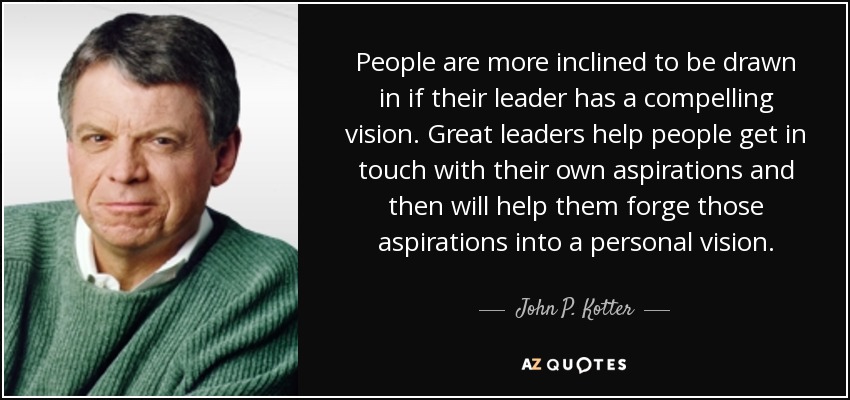
After a century of theories converted into treatises, at the turn of the millennium the shepherds of business recognized that while ideas could be spread among their peers these topics in a siloed manner, they did not address the external and internal challenges faced by organizations themselves.

The Internal Force of Demographics
The numbers of available employees based on birth rates are creating a perfect storm pressing on organizations.

While Baby Boomers anticipated retiring by the 2020’s, the economic upheaval of 2020-2022 has caused many to delay those departures from the workplace. Those deferrals will not make up for the overall loss of expertise and experience.
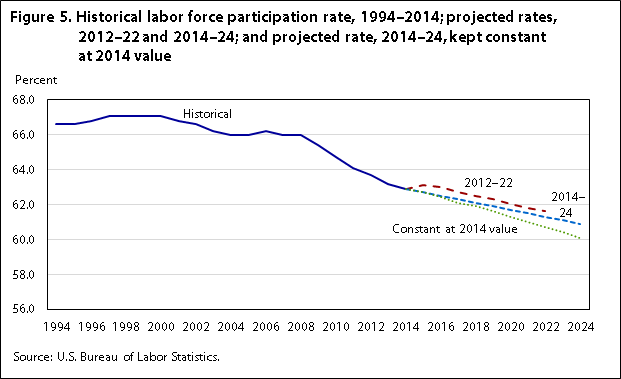
Filling the halls of corporations are Millennials – the Gen Xers and Gen Yers joining them.
Neil Howe and William Strauss, authors of Generations and Millennials Rising, examined the effects of the generations rising through the ranks, from their attitudes and behaviors in high school, into further education and on into the workforce.
Millennials, born between 1981 and 1994/6, are the most racially and ethnically diverse generation in U.S. history. Nearly 35 percent of Millennials are nonwhite or Latino.
Back in the early ‘70s, about 33 percent of Boomer teens planned to attend a four-year college, a figure that rose to 54 percent for Gen-X teens in the mid-’80s. When interviewed, Millennials felt confident about life after graduation.
For the Millennials, that expectation of going to college reached anywhere from 64 to 71 percent, according to various late-’90s polls. More than half of them agreed that “people my age should be optimistic about their chances of having a good job.” Even among those growing up in families earning less than $30,000, 54 percent believed the world would hold “many opportunities for me.” Among those in families earning over $75,000, that proportion rose to 78 percent. More than four in five believed while in high school that they would be financially more successful than their parents—a percentage that rose sharply during the 1990s. A Class of 2000 Survey showed only 6 percent expected. to make less money than older Gen Xers and 78 percent expecting to make more.
During their high school years, a rising share of Millennial seniors said, “making a contribution to society” is “extremely” or “quite” important, while a declining share (though still a majority) say the same for “having lots of money.” In a turnabout from Gen X, Millennials have faith that the American Dream will work for them, and for their own children. “Being able to give my children better opportunities than I had” has reached an all-time high—which, given the opportunities they believe they already have, indicates a great deal of confidence indeed.”
Team orientation took on a whole new style and attitude under the Millennials. In dress and manner, Millennials appeared more team like during their school years. The growing efforts by schools to teach citizenship and group skills messaged that ‘adults’ wanted them to be more team like. What was less obvious is the extent to which those kids actually felt more team like. Surrounded by individualistic older people, yet optimistic about their own abilities, Millennials lived in a teen world with little cohesion, decided they didn’t like it that way, and deliberately tried to turn it around.
The Millennials’ team ethic showed up in their aversion to disorder within their own social setting—starting within their classrooms. When public school students were asked what most needs fixing in their schools, a majority of them mentioned teaching “good manners,” “maintaining discipline in the classroom,” and making kids “treat each other with respect.” Forty percent said unruly student behavior interfered with their schoolwork.
Values built at that stage of life generally become the long-term wiring through which each person navigates the rest of their live.
In the Gen-X youth era, educators disliked “peer pressure” because they associated it with breaking the rules. With Millennials, educators started to harness peer pressure—through student juries, peer grading, and the like—to enforce the rules better.
They are drawn to circles and cliques. Only three in ten Millennials report that they usually socialize with only one or two friends, while two in three do so with groups of friends.
Their collective ambitions also have a rationalist core. According to our Class of 2000 Survey, teens had a great deal of confidence in their generation’s lifelong ability to improve technology (95 percent), race relations (69 percent), and the economy (60 percent)—all objectively benchmarkable “modern” attributes—but far less confidence in their prospects for improving more subjective areas such as the arts (31 percent), family life (28 percent), and religion (22 percent). Other surveys revealed they were more likely than the adults before them to value friendships, but less likely than adults to value the ability to communicate feelings.
Jeffrey Tucker has published numerous articles on the topic, opining the “problem is cultural. Ambition is not what it used to be. The belief in progress has dissipated. It will take many years to restore that lost confidence and the conviction that working hard and getting ahead is the American way. It no longer is.”
Millennials expect to focus more on outer-world achievement, and less on inner-world spiritualism, than their Boomer parents.
These four Forces triggered a leadership shift from top-down and personality driven to ‘Servant Leadership.’
This new stage could be considered The Second Dawning of Leadership.

Growing Leaders
Many of the academic thought leaders developed training programs that could be presented to the staff of organizations. Over time these materials incorporated adult learning techniques and moved from pure theory to practical application and practice through role playing and post training assignments.
However, the materials used in this second dawning of Leadership could be considered relatively short-lived as they were single theory based and designed to send a singular message to participants, despite the need for a model that was instructive to four generations at the same time.
Harvard Business School “Working Knowledge” Newsletter – April 17, 2006, summarized the magnitude of the challenge perfectly: “Can you manage different generations? … Managing multigenerational workforces is an art in itself! Young workers want to make a quick impact, the middle generation needs to believe in the mission, and older employees don’t like ambivalence! Your move.”
The looming challenge arose from two new realities. First, trying to fit an increasingly non-traditional workforce into a largely traditional workplace. Second, a shrinking talent pool.
Whose problem was this? All stakeholders, particularly those in leadership roles.
As if this were not enough of a challenge for organizations all the way through 2019…
The Explosive Organizational Pivots Demanded by the ‘Radically Unexpected’ Event
Had the health and economic shocks of 2020-2022 been resolved in mere weeks, organizations and their leadership might have had a brief reconsideration and minor reset.
Instead, in the U.S.A. alone 31.3 million people were unable to work because of pandemic-related closures or business cutbacks. 17.1 million (55 percent) were ‘employed’ at the time of the shutdowns, yet found themselves benched at home for 6 months, 12 months and even 24 months with completely disrupted supply-chains, constantly shifting work style expectations, and pendulum swings personal and team productivity.
More was yet to come as Human Resources leaders began to report on an unexpected phenomenon and no one anticipated the magnitude of the effect.
The Great Resignation
The completely unanticipated intersection of political decisions, enabling technology and demographic shifts stirred up uncertainty lasting not weeks, but months and years. It had a cascading effect on supply chains across the globe, on the ‘way of work’ across industries, and on the ratio of staff needed versus job opportunities.

Forbes contributor William Vanderbloemen described it as a tidal-wave trend of unparalleled employee turnover that he called “The Great Covid Job Churn”. He attributed this repositioning to four main causes:
• Because of the drastic changes moving from a brick-and-mortar office into their homes entailed, many people decided remote work was the ‘best option’ for them.
• The emotional impact of COVID allowed people to reconsider the importance of family and friends. The reaction was that more people than ever wanted to rebalance their lives to be closer to home and their loved ones.
• The pandemic impacted the structure and requirements of many jobs. As a result, many employees left their jobs in search of opportunities that were more like their original roles.
• Initially, workers wanted to wait for the ‘return to normalcy’ before making the move to another organization or a new career. When they realized the job market had become the world of opportunities, they changed that decision and accelerated their departures.
While their reasons for transitioning out were diverse, even when they did not have their next job lined up, employees by the thousands turned in their farewell notes to their bosses and they left to explore what might be greener pastures.
The results of multiple authoritative surveys are painting the road ahead both financially and culturally for businesses across industries.
55% of workers in America are planning on looking for new jobs. Gen Z-ers are the group that feels the least appreciated and underpaid. 41% of the global workforce is considering quitting their jobs. 46% of the world’s workforce plans on relocation this year.
Adults younger than 30 are far more likely than older adults to have voluntarily left their job last year: 37% of young adults say they did this, compared with 17% of those ages 30 to 49, 9% of those ages 50 to 64 and 5% of those ages 65 and older. Experiences also vary by income, education, race and ethnicity.
84 percent of millennials in the workplace who participated in a survey conducted by Deloitte said they’ve felt the effects of ‘poor leadership’ at their current job. The top causes were unrealistic expectations for deadlines, lack of recognition, and working too many hours on the weekend.
Forty-four percent of employees are “job seekers,” according to Willis Towers Watson’s 2022 Global Benefits Attitudes Survey.
The number 1 reason employees gave for quitting in a survey of more than 9,000 people by the Pew Research Center, a think tank based in Washington, D.C., included:
63% said they left due to low pay and a lack of opportunities for advancement.
57% said it was due to feeling disrespected and un-valued at work.
40% of Gen Z and millennial respondents said they had quit a job because it didn’t fit with their personal life, compared to 33% of those polled, overall.
Add to this the recent report on organizations’ trimming their ranks. Around the world, biotech companies are reducing their workforce by more than 25%. This is a consistent trend not just in biotech, but across all industries right now.
With the fear of uncertain economic conditions and geopolitical events, companies are using this as a time to reorganize and focus on key programs and products – which has the positive impact of extending the cash runway of the organization.
Combine the forces of technology enabling remote work with the forces of demographics and socio-economic challenges, and corporate leaders have a giant entangled challenge to solve. Now add in the lack of a sense of belonging created by successive years of remote work. Whether we consider long-term employees or newcomers who were on-boarded during the ‘DamnPanic’ years, the net effect has been a loosening of engagement, motivation, and attachment to their employer.
A challenging time for anyone desiring the role of ‘leader.’

The Costs of Employee Turnover
In the United States SHRM.org estimates organizations paid six to nine months of a worker’s salary to replace them in 2021. To put things into perspective, employee engagement firm Sparkbay broke down the employee replacement costs by job level:
• Entry-level – 30% to 40% of annual salary
• Mid-level – 150% of annual salary
• Highly skilled – up to 400% of annual salary
The cost of employee turnover – or employee churn – is different based on the industry, job role and company.
At the same time Human Resources professionals are aware that the oldest generation of employees are not staying out of loyalty to the mission of the organization, but out of economic necessity.
The Great Resignation has sent shock waves through employers, including economic impacts that forced the immediate bottom-up realignment of teams, pivoting business operations, and rethinking company vision and culture.
The complex people challenge ahead for leaders means the solution to this complex puzzle will take years to address.
What does it mean for Leadership?
What we know about employees, regardless of generation, is that they want to feel they are inspired by and aligned with the vision, mission, and values of their employer, believe their leaders are models they want to follow, have leaders who clear the way so they can do their best work each day, experience being seen for their contribution and have it acknowledged regularly and sincerely. These are not new desired. Forty years of survey data has revealed that people want a timely sincere acknowledgement given face-to-face more than a five-percent increase in their base pay.
Across industries, this is the realm that Leaders influence directly by commission or omission.
It is no longer enough to tout ‘servant leadership.’ Profoundly complex while critical to deal with is the set of considerations: who now needs to be lead and who is doing the leading. Due to the shared presence of four generations in the workplace, the requirements have evolved even further into ‘customized leadership.’
The Third Dawning of Leadership
For two centuries the pattern seemed fixed. While technicians focused on the operational execution, and managers focused on inter- and intra- departmental issues, leadership once focused on strategy and the challenges of the external environment. Luminary leaders inspired from the stage and dealt with the complex paradoxes in business that rose to their level for solutions.
Today, leaders have a more complex responsibility that pulls their attention deeper into the organization than the era in which, simultaneously, the youngest of the employees are impatient to lead.
Finally, there are overlapping effects on company culture of each departure among the four generations that impact every employee and team member they collaborated with. A portion of the more senior leader’s mind must be continuously on team reconfiguration, work configuration, demographic and psychographic re-mix, societal speed of change.
Leading Four Generations in Today’s Workplace
Myriad books and white papers have been written about the comparative composition of the four key generations cohabiting the corridors of business today. The question of who ‘is leading’ and who needs to ‘be lead’ is at the foundation of all companies’ ongoing consideration.
It is worth reviewing what makes each of the recent past five generations tick and what it means for leadership. What each of these generations values as employees and as leaders differs significantly.
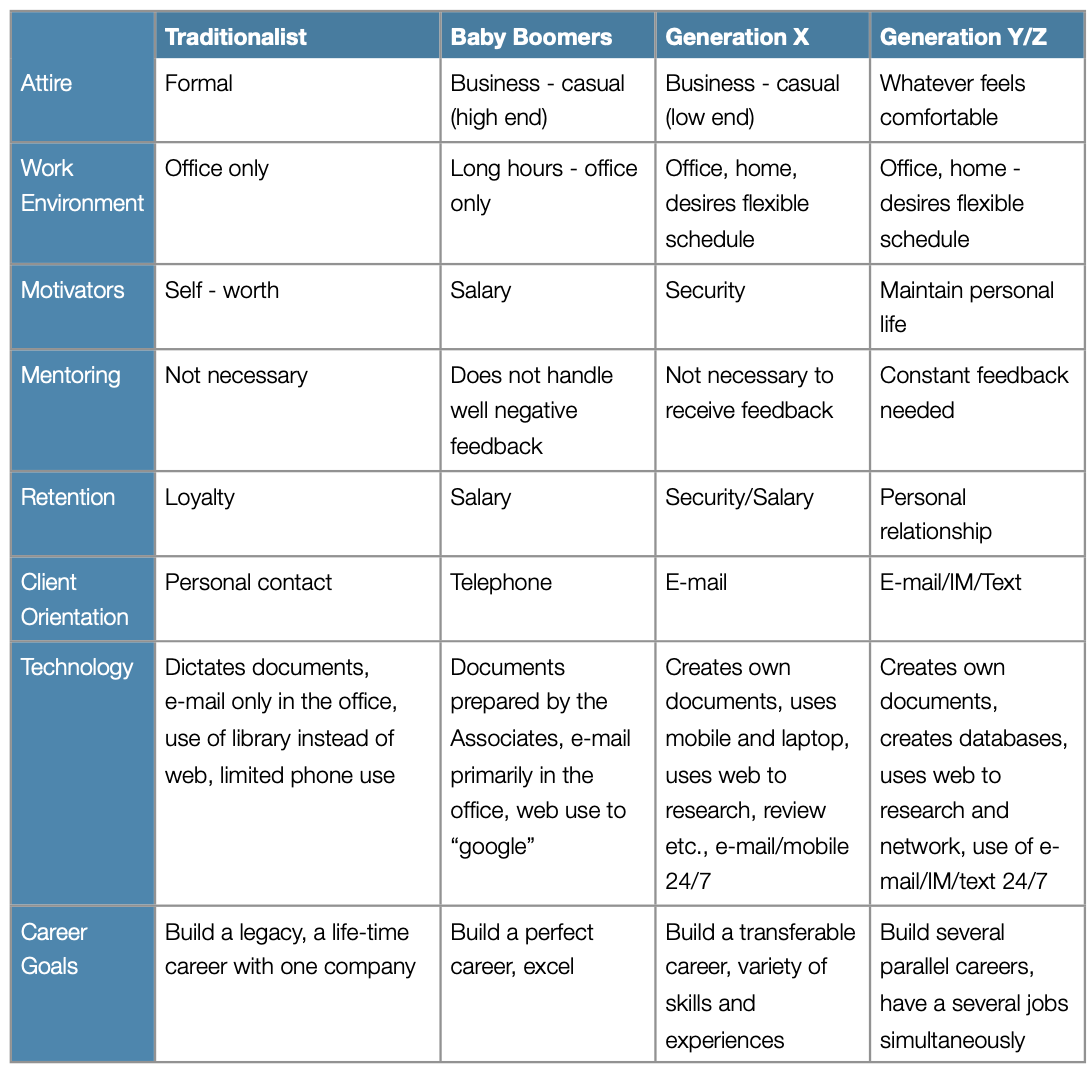
With the economic shock to the Baby Boomer generation, many have announced pushing off their planned retirements. Boomers in leadership roles will be considering if they want to relinquish that role or in fact feel driven to increase their mentorship and legacy while they are there. Those with ambition earlier in their work careers grew into leadership roles. But that was when Leadership seemed simple.
Gen X admires competency and honesty. They do not value achievement as highly as other generations. They avoided stepping into roles where they felt peer pressure would be needed. Gen Xers look to their leaders to be Role Models – leaders who exemplify the company’s values with their actions and who are ready to jump in to help solve problems and lead the business through transition and change. Gen Xers want leaders to be engaged in work and be easily approachable. That doesn’t mean they personally want that role. They tend to be fair, competent, straightforward and at times brutally honest. Gen Xers understand employees want more out of work than just a paycheck. They strive to make the culture attractive to employees of all generations as mentors. Their tenure with the organization implies it’s ‘their turn’ to lead. If they don’t want the mantle, will they follow the Gen Y and Gen Z who will be stepping up into a new model of leadership?
Gen Y wants to make things orderly and have them follow the rules. Gen Y leaders work to shape the business to suit its talent as much as they shape talent to the business. They will strive to make the workplace, working practices, and tools of business much more personal and customizable. The same holds for leadership communications and practices. Where Baby Boomers were accustomed to the notion “No feedback is good feedback,” Gen Y employees want continuous interaction and feedback from their bosses and peers. They do not want to wait for major achievements in order to lead. Their version of leadership may feel like over-communication and potentially insincere out of sheer volume to the older generations.
Gen Z mostly prefers leaders who listen to every opinion of their members to reach a common decision called the democratic style. They may not have learned that decisions by consensus can take an organization down as fast as it can enable sound decisions and actions. They consider an effective leader to be someone who can communicate rationally, connect relationally, manage practically, and lead directionally and strategically. They value leaders that communicate and work alongside their teams. Moreover, with their deep focus on teaming, they are used to stepping into their version of leading on a regular basis.
For all that, organizations need to sort out how to harness the leadership and develop it in staff, whether they are new leaders, growing leaders, experienced leaders, and deeply seasoned leaders.
And in turn those leaders need to become highly flexible and adaptable in leading to create the sense of belonging that staff are looking for, whether they are working co-located on-site or remotely.
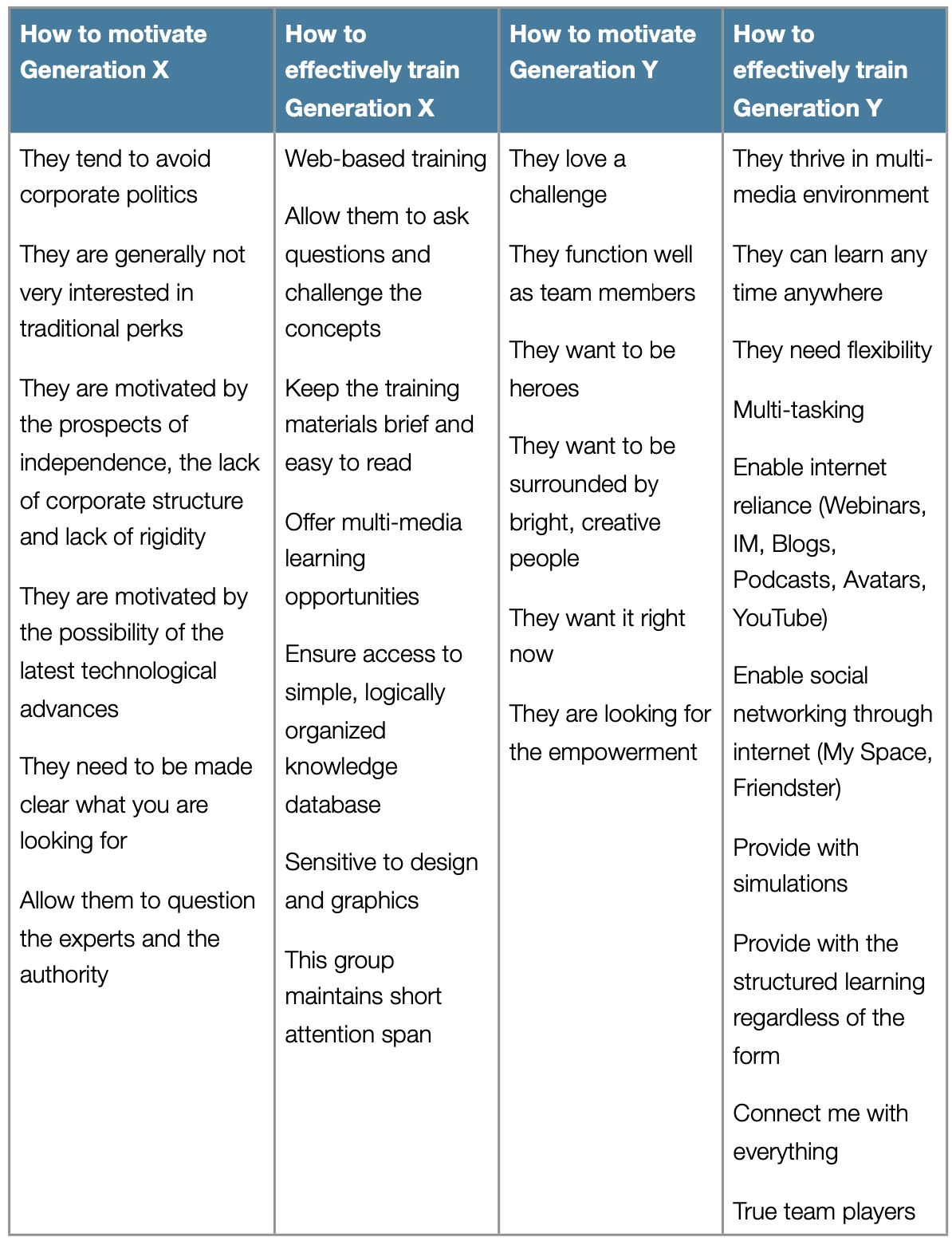
The Boomers, Gen X, Y and Z are all showing up at work daily to feel engaged, belonging, appreciated, recognized, supported, enabled, educated.
Their career aspirations vary, as do how they wish to be learning on the job.
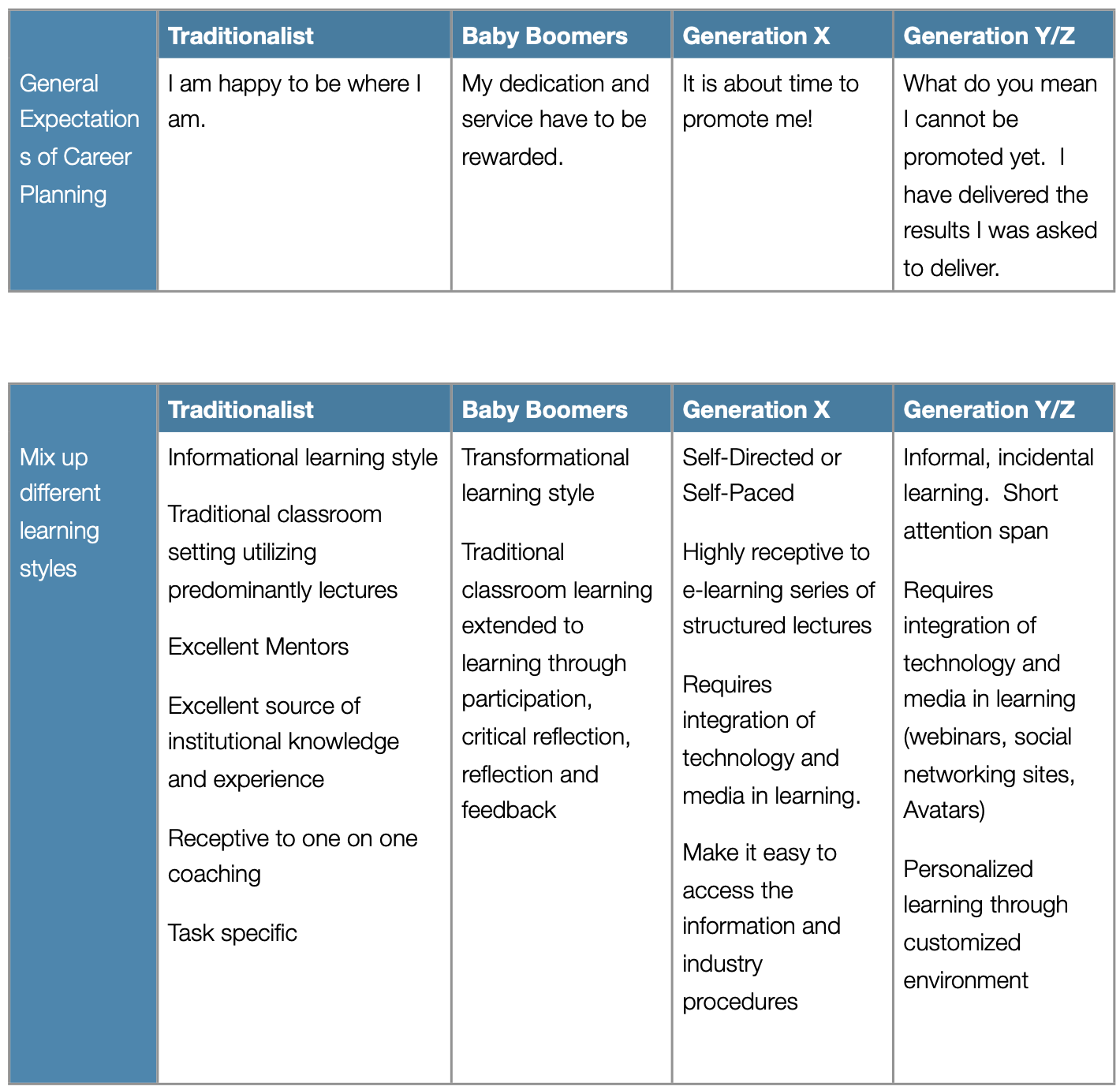
Successful leadership during the post-pandemic era and the Third Dawning will be neither simple nor straight forward. Leaders must keep all the strategic issues on the front burner while also meeting the varied values, wants and needs of these four generations, whether leading them one-on-one or in teams.
This is NOT the realm of charisma and personality, it is the realm of deliberate use of skills, processes and practices that result in belonging, engagement, motivation, participation, and retention.
“Who is a leader today” spans from the C-Suite, through layers of Managers, to anyone with the ability to deliberately influence the performance of another employee, including in constructing self-directing teams.
“Who needs to be lead” is everyone at every level of the organization, save perhaps the President of a corporation.
What cannot wait is for leaders to slowly rise over a generation through the Third Dawning of Leadership.
A priority must be placed on specific leadership talents and processes becoming embedded throughout their organization. No longer just the C-Suite. No longer reserved for those who have ‘the trait’ in themselves, no longer assigned to those who are particularly ‘interested’ in it.
This is the realm of applied customized leadership dealing with five current critical Core Leadership Imperatives.

The First Imperative of Leadership
All leadership takes place in the context of the organization’s existing culture, mission, objectives and expectations.
The Second Imperative of Leadership
All leadership establishes and reinforces an organization’s ability to produce effectively and responsively that endures beyond the tenure of the leader.
The Third Imperative of Leadership
All leadership responds or reacts to the external challenges posed to the organization’s human productivity and business profitability.
The Fourth Imperative of Leadership
All leaders recognize when they are in the Leader’s seat, or it is their turn to be lead.
The Fifth Imperative of Leadership
All leadership is achieved through relationships and can be achieved with the precise least amount of time and effort required to result in employee engagement, belonging, empowerment and retention.
These imperatives could look overwhelming from an outside perspective. Each is in fact necessary to future-proof the organization, individually and collectively.
Where Leadership Development Stands Today
Today’s leaders need to become highly flexible and adaptable in leading to create the sense of belonging and acknowledgement that staff are looking for, whether they are working co-located on-site or remotely.
These new practices and organizational processes take time to design and install so that they become an integral and credible part of the organization’s culture and way of doing business. They need to be embodied in each person with a leadership role. Installing them is not achieved by reading a book or attending an inspiring lecture. It requires each person spend thought and time on the future traits and techniques they will take on and practice them as they embrace a new identity for themselves.
Leadership training programs / development projects need to incorporate the variety of learning channels and activities that are required to keep the interest and follow through of the four generations in today’s workplace.
How To Grow Leadership Bench Strength in Todays Organizations
Studies have shown that only approximately 10% of all learning takes place in formal front-of-the-room training. Approximately 20% of learning comes from using focused attention and time with materials systems such as books, manuals, videos, checklists, and facilitated discussions. 70% of learning occurs “on the job.” Then the participant learns by using the information provided in both structured experimentation and adapted/customized form. Most learning occurs by trying the processes and techniques and by making mistakes and observing what worked, what did not, and drawing conclusions that are shared and discussed with other participants. This phase of learning is where participants are now able to learn from the styles, insights, and shared information from their fellow project participants.
In learning a sport, mastery occurs through deliberately designing and using a new balance between thought and action. New muscle memory is developed through using deliberate structures and processes. Repetition of mnemonic devices gradually replaces old habits. Leveraging adult learning techniques performs the same function in Leadership Development, until the tools, processes, techniques all become ingrained intuitive skills applied with the lightest of touches.
These comprehensive learning elements are critical to any efforts to future proof an organization through up leveling leadership throughout the company.
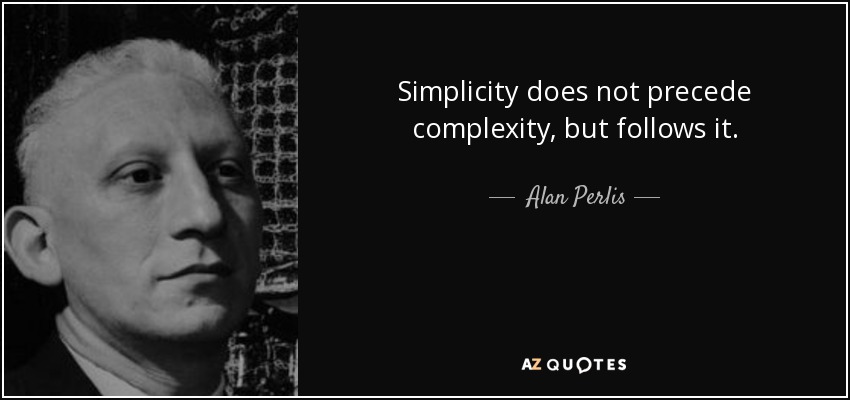
THIS is the realm of third generation leaders who will “Future Proof” their organization.
Curriculum
Quantum Leadership – Part 1- Year 1
- Part 1 Month 1 Planning Process
- Part 1 Month 2 Situational Analysis
- Part 1 Month 3 Internal Analysis
- Part 1 Month 4 Meaningful Metrics
- Part 1 Month 5 Self-Assessment and Goal Planning
- Part 1 Month 6 Forming Habits (Installing and Optimizing)
- Part 1 Month 7 Self-Cueing and Reviewing
- Part 1 Month 8 Individuals
- Part 1 Month 9 Teams
- Part 1 Month 10 Peer Groups
- Part 1 Month 11 Performance Management
- Part 1 Month 12 Problem-Solving
Quantum Leadership – Part 2- Year 2
- Part 2 Month 1 Communication
- Part 2 Month 2 Delegation
- Part 2 Month 3 Mastering Meetings / Meeting Mastery
- Part 2 Month 4 Building Self-Sufficiency
- Part 2 Month 5 Challenging Status Quo
- Part 2 Month 6 Preparing For Change
- Part 2 Month 7 Steering Change
- Part 2 Month 8 Rewards & Recognition
- Part 2 Month 9 Individual Achievement
- Part 2 Month 10 Creating Community
- Part 2 Month 11 Establishing Consistency
- Part 2 Month 12 Assessments and Forward Planning
Program Objectives
The following list represents the Key Program Objectives (KPO) for the Appleton Greene Program Title corporate training program.
Quantum Leadership – Part 1 – Year 1
- Part 1 Month 1 Planning Process – During this course, we will examine what it takes for leaders to be successful in a business environment of forced organizational transformations to meet the challenges of employee retention and performance growth as employees becoming increasingly selective about where they wish to be employed and for what duration. Whether referred to as The Great Reset or Resignation, the work-life balance shifts and workplace challenges being posed are here to stay. Each fundamental leadership practice requires re-thinking and redesign in order for the the organization to stabilize its workforce and manage the soaring costs of employee recruitment and retention. Course participants will learn to research issues, analyze the current external and internal factors, assess their implications for the company, create plans to address them, and implement, adapt and adjust the practices and processes required for success in leadership activities to affect the desired effective outcomes. This course is titled Quantum Leadership. By definition, quantum refers to the smallest amount of energy or effort needed to produce the desired interaction or result. Each leadership process will be examined, learned, put into practice and refined in order ot reduce the time, effort and energy required for Quantum Leaders to play their role in the organization. Each process and practice will be reviewed and evaluated for its tangible impact on the business’s benchmarks and the course’s KPIs and integrated into the participants ongoing leadership activities. The very first step in the corporate training program installing Quantum Leadership in an organization is creating a plan. The first session in this 2-year program will cover how to create a fixed plan implemented in 90 days cycles. Each 90-day plan will include assessment by the participants of the current state of their skill, practice or process, followed by creating a desired future state, a roadmap for putting the new processes into practice, and actionable steps to be undertaken between the workshops. Accountability partners will be assigned. Check-ins and adjustments to the practices and processes will be designed and implemented during the focused span of each topic module. Upon completion of the 90-day span, the results will be evaluated against the benchmarks and objectives set during the first 90-days. Participants will use the insights gained through the span of the module to set the Quantum version of the 90-Day Planning and will be incorporated into each next module. By the end of this workshop participants will be able to use 90-Day planning for the course as well as other initiatives in their areas of responsibility.
- Part 1 Month 2 Situational Analysis – The objective of this module is for the participants to learn how to determine potential positive and negative impacts and repercussions of the current approaches to solving the organization’s challenges, and form the roadmap _______________-. The second session launches conducting a situation analysis, the process of critically evaluating the internal and external conditions that affect an organization, which is done prior to a new initiative or project. The importance of situation analysis, is the rigor it brings to: Defining the nature and scope of a problem, Identifying the current strategies and activities in place to address the problem, Understanding the opinions and experiences of stakeholders, Giving a comprehensive view of the current situation of the organization, Detecting the gaps between the current state and desired state, Providing information necessary to create a plan to get to reach the goals, Identify the best courses of action to take during the project, Making sure that efforts and actions are not repeated and wasted unnecessarily. Participants will consider that each change element may well impact the cost, schedule, product quality, employees, department throughput, morale, retention, etc. during and after the time the new leadership activities are implemented, positively or negatively. The research and analytical processes the participants will use uncovers the external opportunities and threats faced by the organization. This in turn leads to describing the following session, the internal analysis supporting the desired situation and exploring scenarios and strategies to move forward from your organization’s current situation to achieve it. The team will be guided through a process of identifying anything that could create problems for successfully implementing new leadership activities. By having this understanding before work begins on making any changes or improvements they will stay nimble during this program. The workshop will a simple cost-benefit analysis process to expand participants observation and evaluation techniques that they’ll use repeatedly throughout the two0year program. This workshop will set the foundation for “biggest bang for the buck” by taking the topic beyond dollars, to incorporate the human factors. The participants will understand why each technique is being given 30-days of focused attention and application and bring back their assessments of the pros and cons to each solution and define what needs to happen in order to minimize the downside of particular tools and processes while implementing each technique. Part of this step will be developing contingency plans to respond to a potential problem if they run into one. The key takeaway from this session will be the process for effectively conducting external elements of situation analyses, to proceed through the process of data gathering, described problem analysis, brainstorming techniques, and folding the findings into scenario discussions.
- Part 1 Month 3 Internal Analysis – The objectives of this module are for the participants to understand the organization’s Internal contribution to the current circumstances as well as its potential contribution to the desired future state of the organization.The process of leadership optimization requires a thorough understanding of the ecosystem in which the activities will take place. This means that all elements, whether knowledge, disciplines, processes and functions are interconnected. One key objective should be to have them working as a well oiled machine to produce the desired outcomes. To that end, this continuation of the situation analysis identifies the different internal elements within the ecosystem, their roles and interactions, and how they combine to impact the ongoing employee experience. This knowledge can then be leveraged into specific optimization activities at different stages of the leadership journey. This session will be dedicated to the description of the company’s internal ecosystem, the shared vision and espoused values into which the new leadership activities will be ____verbed__. Consolidating the external and internal analyses will be the __noun__ on which the third session’s development of meaningful metrics is based. One of the key learnings for participants will be the necessary ‘nimbleness’ that each individual needs to develop for guiding and participating in the leadership processes they will be spending their time online. While the first stage of most careers is as a technician, developing expertise in the tactical work of the organization that is followed by taking on management activities. While management’s focus is on the guidance, control and correction of those technical activities, leadership’s focus is quite different. Leaders are confronted repeatedly with circumstances of ambiguity and paradox, often with no singular ‘right’ solution. This arena of variability and chaos is the one in which new processes and activities will be _____ed. The specificity sought through the situation analysis is tempered by the constantly shifting internal conditions. The take aways from this session include a new perspective on the challenges of setting organizational improvement goals when they involve the four considerations of the situation analysis (SWOT). The findings from this workshop will be incorporated into the ______ upon which meaningful metrics will be ______ed (decided)? The between-session work will include organization and personal assessments of the current state of leadership experience and talent.
- Part 1 Month 4 Meaningful Metrics – The objective of this module is for the program participants to learn how to determine and establish the types of metrics that will be used to track leadership activities’ contribution toward reaching the organization’s goals associated with employee engagement and retention. Proper metrics and reporting formats of these metrics not only help keep the organization focus, but also provide the ability to systematically identify when the results begin to deviate from a goal. This gives the leadership team the opportunity to make timely corrective action to ensure that the progress stays on track. The metrics will be monitored on an ongoing basis by the participants, and reported at each workshop session. There are three levels of metrics which are meaningful during the two years of the Quantum Leadership program and beyond. The first is tracking the activities of leaders to make sure they are doing what they are assigned to do. The second is measuring the outcome of these activities. The third is ensuring that these activities produce results that align with company goals and that are reflected in company and department KPIs. The participants will learn and apply rules that are used to develop effective metrics. They will learn and apply hierarchical metrics that involve the above three areas and that communicate progress, whether at the department and to upper management. Once metrics are established it is important to document how the various operations within the department or organization levels. In conjunction with the HR business partners participants will craft a dashboard of selected metrics that will be tracked throughout the program. Improvements created by the program participants’s activities can then be quantified during the span of the program. This is necessary so that improvements from current performance levels are described in terms that are aligned with the organization’s overall HR strategy and contribute to it. If a leadership activity does not create the desired effect, or if it creates more problems than it solves, the change needs to be quickly modified or reversed. Included in the metrics will be those that are SMART, those that are observable, and those that influence or indicate attitudes and morale. This session’s discussion will determining the starting set of metrics. These include KPIs (Key Performance Indicators), Leading Indicators, Lagging Indicators and tracking KPAs (Key Performance Activities). These may be modified and adapted by the participants in coming months as the new activities take shape and inter-session learnings and observations take place.
- Part 1 Month 5 Self-Assessment and Goal Planning – The objective of this module is for the program participants to focus on the personal elements of leadership required for success on two fronts: The first is their own leadership competence and techniques, and the second is their interactions with those they are leading. In combination, a powerful partnership is created that can transform and stabilize your organization. The coming 90-days will be focusing on self-leadership to set the groundwork for adopting the new interactions that lead others. In order lead to create new results and install new competencies, each person must disrupt themselves and their historical way of operating. Our brains are hard-wired to hold on to habits, the way we’ve always done things that have become automatic. Research shows that more than 70% of change initiatives fail because of unconscious resistance, not because people weren’t sincerely interested in growth and change. Those who succeed are those who adopt systems and techniques for staying aware while the new thinking and behaviors become the new habits. Participants will learn more about the brain, the science of adopting new habits and successfully leading systemic transformation for organizations, and incorporate that understanding into the remaining modules of the program. Successful personal growth and transformation requires self-awareness, openness to new ways of thinking and working, and a commitment to developing new competencies. Through a series of assessment tools, participants will become observers of their own preferred ways of thinking and interacting with others and of the level of effectiveness currently produced. Through the exercises and facilitated discussion with the other participants they will examine the potential results that can be achieved through alternative processes and practices. Incorporating the information obtained through the first set of assessments, the first workshop will hone time and attention management techniques, listening for leadership rather than management, and communication styles and their effectiveness for leadership. The goals of this module is to wake each participant up and provide a supply of alternatives to test in the organization to launch the expansion and refinement of the techniques they use in coming months and years. A 90-Day action plan will be designed and launched at the conclusion of the workshop. The actions taken, the experience of using those activities will be observed, and the results obtained will be tracked daily and reported at the following workshop.
- Part 1 Month 6 Forming Habits (Installing and Optimizing) – The objective of this module is for the participants to learn how to assess and adjust the new processes and techniques being adopted for themselves. Each new approach has potential positive and negative impacts, rewards as well as potential pitfalls. Each participant will make adjustments to the activities that will continue to be used and tested over the course of the program. This second workshop of the self-leadership module, the middle of the 90-day span, will dive into the first 30-days’ experiences and observations of the participants. The reporting material will be the basis of exercises and discussions, analyses and evaluation, and learning alternatives for optimizing their new practices. Through observation, tracking and reporting, followed by facilitated discussion, the participants will take individual responsibility for their progress with the techniques. Accountability partners will be set up during the workshop. It is important that the participants have this phase before the more subtle and often challenging work of leading others begins. More than just committed repetition, forming new habits requires valuing the results of the changes being installed. That includes managing time and attention in radically new ways. A series of refinements to their techniques will be discussed and participants will select the ones they’ll be adopting for the next 30-days. Each participant will have a sounding board available as they test and make adjustments leading to the next workshop. Committed repetition of the new practices will begin to unlock the hold that older habits have in place. Additional personal assessments will be assigned in order to provide feedback and information to be used during the upcoming 3rd workshop of this module. The goals of this module include having each participant take responsibility for systematically using new techniques, learning to test and adjust, sticking with commitments even when the new behaviors are uncomfortable, and cultivating the beginning of a new leadership team through the experiences of the workshop and accountability partners. The actions taken, the experience of using those activities will be observed, and the results obtained will be tracked daily and reported at the following workshop.
- Part 1 Month 7 Self-Cueing and Reviewing – The objective of this module is for the participants to learn how to systematically monitor themselves, evaluate and adjust techniques they are adopting.In order to create desired new results. This third workshop of the self-leadership module, the final of the 90-day span, will focus on how to continually self-monitor and adjust, preventing old habits from pushing out the new ones. Different from the new techniques which will be installed in upcoming modules, older personal foundational habits can be triggered under stressful conditions and attempt to take the reins of control and behavior. This workshop will emphasize a system of self-checkins, deliberate use of external feedback sources and other techniques to continuously strengthen the new foundation. Participants will dive into the prior 60-days’ experiences and observations and learnings and wins. The reporting material will be the basis of exercises and discussions, analyses and evaluation. Each participant will learn which alternatives others have found effective for optimizing their new practices and decide on the modifications that will optimize their own. Emphasized in this this module is for the participants to learn how to comfortably report on the results of their improvements and use these results to make recommendations concerning further action. As a team they will additionally discuss _______- the most effective techniques as new elements for their entire teams to adopt and test, measure and report on. A project plan for implementing the selected techniques and tools will be designed, to be launched during the following 30 days. Through observation, tracking and reporting, followed by facilitated discussion, the participants will take individual responsibility for their progress with the techniques. Accountability partners will be maintained for the duration of the program. The goals of this module include having each participant take responsibility for systematically using new techniques, rolling out techniques to their team, learning to test and adjust at the team level, continuing to strengthen the new behaviors, and deepening the new leadership team’s relationship through the experiences of the workshop and accountability partners. The actions taken, the experience of using those activities will be observed, and the results obtained will be tracked daily and reported at the following workshop.
- Part 1 Month 8 Individuals – The objective of this module is for the participants to learn how to function as an effective leader of individuals. Now that the ground work is set the focus shifts to those leadership practices and processes can transform and stabilize your organization through individual employees. It is important that members of a team first know and buy in to the team’s charter. This is critical for getting members of the team all pulling in the same direction. The process of getting individual buy-in and public commitment to the charter by each team member is always initiated by a leader. In effective teams, the managers pick up the message and carry it forward in additional communication. Any member that does not buy in to the charter may create friction that distracts other team members and slows the momentum overall. So the overall tone of the communication needs to be set at the leadership level and then carried across and down through the organization. The activities within this 90-day module are designed to give participants repeated practice at being the leader who inspires others to join the efforts towards the stated goals set by the Management Team. Inspiration takes place through communication in large forums and intimate ones, impersonal and personal ones, in person and remotely. In keeping with the latest transformation of leadership this will include two-way communication rather than old-style command and control pronouncements, or bravura charismatic presentations. In the same way that leaders must disrupt themselves and their historical way of leading, followers need to be exposed to new ways of thinking that motivate their actions. This first workshop of the module focuses on the leader-to-employee communication to be used for the next 30-days on a one-to-one basis. The findings from the assessments will be integrated into the processes and techniques which will be assigned …Through a series of assessment tools, participants will become observers of their own preferred ways of thinking and interacting with others and of the level of effectiveness currently produced. Through the exercises and facilitated discussion with the other participants they will examine the potential increase in results that can be achieved through alternative processes and practices. The goal of this module is to teach the participants broaden their process alternatives, to test the use and refinement of the techniques they adopt in coming months and years. A 90-Day action plan will be designed and its first phase launched at the conclusion of the workshop. The actions taken, the experience of using those activities will be observed, and the results obtained will be tracked daily and reported at the following workshop.
- Part 1 Month 9 Teams – The objective of this module is for the participants to learn how to function as an effective leader of teams. Now that the ground work for one-to-one inspiration is underway the focus shifts to those leadership practices and processes can transform and stabilize your organization through teams of employees. It is important that members of a team individually and as a cohesive team know and buy in to the team’s charter. This is critical for getting an entire team all pulling in the same direction. The process of getting team buy-in and public commitment to the charter by each team member is always initiated by a leader. The managers reinforce the message and carry it forward in additional communication. Any member that does not buy in to the charter may create team friction and distraction that slows test momentum overall. So the overall tone of the communication is again set at the leadership level and then carried across and down through the organization. The activities within this second 30-day workshop are designed to give participants repeated practice at being the leader who inspires entire teams to join the efforts towards the stated goals set by the Management Team. Inspiration will again take place through communication in large forums and intimate ones, impersonal and personal ones, in person and remotely. In keeping with the latest transformation of leadership this will include two-way communication rather than old-style command and control pronouncements, or bravura charismatic presentations. Teams of followers need to be exposed to new ways of thinking that motivate their actions. In many organizations, leaders rise in their roles and therefore inherit pre-existing teams. This second workshop of the module focuses on the leader-to-team communication to be used for the next 30-days on a one-to-team basis. The findings from the assessments will be integrated into the processes and techniques which will be assigned. The complexity of communicating with groups with a variety of personal styles will be a significant part of the training. This includes working with cross-functional and cross-divisional teams. The goal of this module is to teach the participants broaden their process alternatives, to test the use and refinement of the techniques they adopt with teams in coming months and years. A 90-Day action plan will be designed and its first phase launched at the conclusion of the workshop. The actions taken, the experience of using those activities will be observed, and the results obtained will be tracked daily and reported at the following workshop.
- Part 1 Month 10 Peer Groups – The objective of this module is for the participants to learn how to function as an effective leader among peer. Now that the ground work for inspiring subordinates is underway the focus shifts to teams of peers, whether in the same business unit or in multi-divisional groups. It is equally important that members of a team individually and as a cohesive team know and buy in to the team’s charter so that there is a consistent tone and message across the organization. This is critical for getting multiple teams working towards the same destination. The process of getting team buy-in through inspiration can be initiated by senior management, if they participate in the team meetings, or by a peer leader. The overall tone of the communication is again set among the leaders and carried across and down through the organization. The activities within this final 30-day workshop are designed to give participants repeated practice at being the leader who inspires teams of peers to join the efforts towards the stated goals set by the Management Team. Inspiration will again take place through communication in large forums and intimate ones, impersonal and personal ones, in person and remotely. In keeping with the latest transformation of leadership this will include two-way communication rather than old-style command and control pronouncements, or bravura charismatic presentations. The findings from the assessments will be integrated into the processes and techniques which will be assigned. The complexity of communicating with groups with a variety of personal styles who are peers will be a significant part of the training. The goal of this module is to teach the participants expand their use of the processes and techniques to teams of peers in coming months and years. The actions taken, the experience of using those activities will be observed, and the results obtained will be tracked daily and reported at the following workshop.
- Part 1 Month 11 Performance Management – The objective of this module is for the participants to learn how to influence performance by modeling, making the organization’s values tangible, creating a culture in which everyone commits to aligning themselves with shared values through action. Leading by example is how leaders provide the evidence that they are personally committed. Modeling is how leaders mobilize others to want to make extraordinary things happen in their organization. It is about clarifying values, ensuring they support the vision of the organization and setting behavioral examples for others based on those values. Over 90-days the participants’ attention will be on three key aspects of systematizing the process of modeling How We Work Here. These are Performance Management, Problem-Solving, and Communication. The first workshop will be used to create a 90-day work plan in which the participants discuss how to model the vision and values that underpin the current ‘way we do work’ in the organization. Consideration will be given as to whether the current defining characteristics of performance meet the espoused shared vision. As this is not a values-reset project, participants will select among the current values to take into project action. The challenges that will be explored include shifting employees out of the attitude of waiting to be instructed into taking particular actions in keeping with what is being observed in their leader. In addition to modeling the vision and values of the organization, the goals and associated metrics to be affected in a positive and understandable way will be covered. Opportunities for obtaining feedback will also be considered. By asking for feedback, leaders signal to others their openness to doing what is right, and make it easier for others to be receptive to learning about how well they are modeling the way. The findings from the assessments will be integrated into the processes and techniques which will be assigned. The accountability partners will exchange partners for the duration of the module. The goal of this module is to teach the participants deliberately and publicly show others by their own example that they’re deeply committed to the values and aspirations they espouse. The actions taken, the experience of using those activities will be observed, and the results obtained will be tracked daily and reported at the following workshop.
- Part 1 Month 12 Problem-Solving – The objective of this second workshop of the module is for the participants to learn and apply the second key aspect of systematizing the process of modeling How We Work Here, Problem-Solving, with the Quantum Leadership Problem Solving System (QLPSS). This QL tool is a specific seven step problem solving system that guides objectively planning and executing work with built-in problem solving stages. The steps of the system reinforce a culture in which everyone commits to aligning themselves with shared values through problem-solving. The power the QL Problem Solving System is that it rationally and easily guides even complex multi-disciplinary teams through each step in a fashion that naturally draws in participation and engagement and collaboration. It is applicable for use in single meeting work sessions, status meetings, and complex long-term projects. It can be applied on one’s own in 10 focused minutes or in large group working sessions and business retreats. Leading by example is how leaders provide the evidence that they are personally committed. Modeling this problem solving system, and inviting members of the team to use it during a 30-day window, will stimulate team members to follow the model in their own work, installing it throughout the leaders team. Use of the QLPSS models continuous learning, collaborations, and improvements through small, incremental steps that are simple for others to adopt and make part of their daily way of working. Workshop discussion will cover all the permutations for the used of the system, and develop action plans for the following 30-days to implement the system in each of those configurations. As a universal tool, the QLPSS easily meshes with the findings from the assessments. Additionally, it provides an ongoing forum for the participants to use the techniques and tools they have been honing over the prior six months. In addition to each leader modeling the vision and values of the organization, the goals and associated metrics to be affected in a positive and understandable way, opportunities for obtaining feedback are built in. The goal of this module is to teach the participants deliberately and publicly show others by their own example that their insights, observations and acumen are valued and produce measurable perfomance. The actions taken, the experience of using those activities will be observed, and the results obtained will be tracked daily and reported at the following workshop.
Quantum Leadership – Part 2 – Year 2
- Part 2 Month 1 Communication – The objective of this final workshop of the module is for the participants to learn and apply the third key aspect of systematizing the process of modeling How We Work Here, Communication). As leaders, communication is a core behavior for building relationships and trust. Whether in virtual workplaces, where distance separates us physically, structurally, or operationally, or in person environments, leaders need to be intentional and effective at relationship building and demonstrating trust. They must do so with their employees, their colleagues, and their networks. The activities within this third 30-day workshop are designed to give participants repeated practice at being the leader who models communication in large forums and intimate ones, impersonal and personal ones, in person and remotely. In keeping with the latest transformation of leadership this will emphasize two-way communication. This third workshop of the module focuses on the framework of form-content-timing in order to explore which alternatives create the best working relationship and interpersonal trust. The mixes of the three have the potential to create communication styles of different effectiveness with different individuals, teams and peers. The action plan for the following 30-days integrates the findings from the assessments with the processes and techniques which were assigned during the prior six workshops. The complexity of communicating with groups with a variety of personal styles will be a significant part of the training. This includes working with cross-functional and cross-divisional teams. The participants will again become observers of their own preferred ways of thinking and interacting with teams and of the level of effectiveness currently produced. Through the exercises and facilitated discussion with the other participants they will examine the potential increase in results that can be achieved through additional alternative processes and practices. The goals of this module is to teach the participants deliberately and publicly daily use communication to model respectful conversations, openness, positive attitudes, and camaraderie. The actions taken, the experience of using those activities will be observed, and the results obtained will be tracked daily and reported at the following workshop. In addition to each leader practicing and refining their use of the communication techniques, opportunities for obtaining feedback are built in.
- Part 2 Month 2 Delegation – The objective of this module is for the participants to learn and apply the tools and processes for Enabling Stakeholders to do their best work. Different than setting vision and strategy, this practice is focused on clearing the friction from the work flow throughout the organization. While managers focus is on enabling at a daily tactical level, a leader’s focus is on the systemic issues that smooth the way or impede it. The friction is often identified by the employees, yet the core issues may be systemic, broad and complex, demanding a higher level of problem-solving. The activities within this first 30-day workshop begin with delegation, the process of handing over work responsibilities to others and supporting their successful accomplishment. This is an opportunity for more junior staff to learn to discuss and contribute actively to solving system-level challenges. The realignment that will take place is becoming a leader of the process improvement without climbing into the trenches. Folding in the learning from earlier modules, not only will the participants be practicing leading the problem-solving rather than doing the solving, their team members will be guided and mentored rather than managed as they elevate their focus and efforts. The action plan for the following 30-days incorporates elements from the prior workshops in a highly structured process that can be replicated across disciplines, divisions and areas of interest. Moreover, this system can be deployed with a single employee or a large group. Participants will decide collectively if they wish to implement delegation on a shared effort or on efforts relevant to their own arena of authority. The goals of this module is to teach the participants to deliberately solicit areas of friction their team(s) are dealing with, identify the appropriate level and scope of the project to be delegated, convene the working team and transfer to them the responsibility and authority to research and propose the system changes that could produce improved performance.
- Part 2 Month 3 Mastering Meetings / Meeting Mastery – The objective of this module’s second workshop for enabling stakeholders is for the participants to learn and apply the tools and processes for Mastering Meetings. Among the most neglected topic in business is the degree to which the right meeting in the right format with the right contents and processes can create an instant twenty percent boost to productivity. All too often organizations deem meetings to simply be gatherings of people at a common location and time to pass information along. They miss the significant differences among 5 Key Meetings and their purpose, function and specific outcomes. Additionally, the lack of management training produces meetings driven by personality rather than by process. This workshop focuses in granular detail on the specific types of meetings, how to assemble and conduct them and integration with other topics covered in the prior workshops. Every aspect of the creation of effective meetings will be honed by participants. While the QL Program is focusing on the leader, their modeling of the Quantum approach to meeting management can be adopted throughout the organization. The workshop provides the QL Meeting Management Guide which can be disseminated throughout the participants. The topics covered include: Planning and Preparing, Logistical Arrangements, Meeting Space and Electronic Options, Guidelines and Disruption Management, Roles and Responsibilities, Chairing a Meeting, Steering Participation, Meeting Followup. In particular, the leader as facilitator will be explored. Use of meetings in face to face settings versus electronic meetings will be discussed in depth, element by element. Participants will learn the 5 Core Meetings and create 30-day action plans to take the material from the workshop into every meeting they own or influence. Modeling these meetings as a leader will enable each participant to influence adoption by their subordinates.
- Part 2 Month 4 Building Self-Sufficiency – The objective of this module’s third workshop for enabling stakeholders is for the participants to explore and apply the tools and processes for cultivating self-sufficiency in others. During 2020-2022 the global pandemic upended the normal patterns of work, individually and through teams. Only manufacturing and service industry companies maintained continuity among their operations crews. The constant pivoting of business models during those 24 months uncovered the need for organizations to create nimble, flexible, responsive and self-sufficient staff. The stronger an individual’s self-sufficiency in the workplace, the more impactful their teamwork can become as each team member can rely on the accountability of their fellow team mates whether working together or in person. Developing resilience is anchored in a sense of purposefulness, the skills of proactive and positive thinking, risk-taking and managing uncertainties. Setting aside ‘teaming’ for this 30-day span, participants will explore deepening their own self-sufficiency while mentoring it in their teams. Adapting the ideas of urban self-sufficiency to the workplace, participant will learn how to identify needs, build a business case, propose a solution design, shepherd the implementation from the stance of a leader. Participants will learn the keys to providing for oneself without the help of others, being independent, and being able to provide for ones own needs. The self-trust that is cultivated melds with being able to make decisions with confidence. Participants will learn the _____________________.
- Part 2 Month 5 Challenging Status Quo – The objective of this module’s three workshops is to train participants in Leading Change. As Change leaders, participants will initiate the process. During the social and economic shocks of 2020-2022 that complacency was forcibly erased, replaced by nimbleness and pivoting. Today’s leaders need to codify those characteristics by declaring challenging the status quo is a valued pastime and enabling it. Change leadership can look like “if you can think of ways to improve the process, you should take it.” However, the strongest organizations are those win which change and improvements are sourced throughout the organization. This means each person has to stop simply “going through the motions” when it comes to doing their job. It’s a lesson all leaders need to learn. While ideas for improvement can be sourced throughout the organization, when leaders see an opportunity for improvement, they need a compelling case for putting the time and resources into stepping into the tension between what is and what could be. They need the same from any employee who thinks they’ve spotted a worthwhile opportunity to do things differently. The best leaders not only seize the initiative to change the way things are, but create a system of process steps for the rest of the organization to bring their attention and best thinking and efforts to the table. A structured business case needs to be drafted and communicated to leaders, peers, stakeholders and the affected employees. When others see a common gain that benefits everyone in the organization they can be willing to participate in its design and also tolerate the frictions created by making changes while the operations continue on a daily basis. As a first step the first 30 days teach the most effective ways to create an environment employees experience as ‘safe’ to challenge the status quo. That safety is produced by installing systematic steps for proposing their ideas. These include building a business case, presenting the idea, fielding questions, advancing the idea. Historically, in times of constancy and complacency, actively seeking to disturb the status quo and awaken others to new possibilities met with heavy resistance. The recent upheavals has loosened the old fixed thinking and presents a great opportunity for participants to use the techniques which will be explored to advance new ideas. Participants will learn the analytical steps to use in building a compelling business case, assess the risks and benefits of the proposed changes, and advance their ideas with the stakeholders involved.
- Part 2 Month 6 Preparing For Change – The objective of the second workshop of the Leading Change module focuses on how to prepare the organization for change. Two key aspects are creating the execution plan, and selling the forthcoming change in the organization. Executing a change strategy is the most challenging part for a change leader. Execution requires assigning the right people to the right tasks, breaking down big projects into smaller more attainable goals, involving stakeholders to ensure that critical elements are considered, developing metrics to measure progress and success, while at the same time trusting employees’ capabilities and giving them enough freedom to make decisions within their capacity and area of responsibility. During the second 30-day span, participants will gather a team and work through the design of a change initiative that affects a single part of the organization. The plan will leverage the structured business case that was drafted and communicated to leaders, peers, stakeholders and the affected employees. The initiative’s design will include risk analyses that acknowledge sometimes change efforts fail and plan ahead for how setbacks will be dealt with. Rather than trying to redesign an entire organization structure and processes, it will most certainly be more realistic to address one specific part of the organization. This will enable the participants to focus on the relationship side of working with their team, leading the process, distributing the work among many, rather than getting lost in a highly complex project requiring long-term or full-time team assignments. An additional consideration as change leader will be the consideration of how to execute the transformation plan with minimum friction. The accountability partners will be sounding boards for each of the participants as they take on the mantle of facilitating others involvement in the project they pursue. Participants will learn the analytical steps to use in building a change plan, the relationship management steps of bringing together team members who may have never been encouraged to challenge the status quo, and tools to use with their team members who are learning to experiment, assess the risks and benefits of proposed changes, and advance their ideas with the stakeholders involved.
- Part 2 Month 7 Steering Change – The objective of the final workshop of the Leading Change module focuses on how the leader steers the change. Company culture is being shaped by leaders devoted to serving their team’s needs and helping them navigate through uncertainty to a potentially different future than they imagined at the start of their careers. This is the ongoing responsibility of the QLP participants. Business change boils down to shifting thinking and behaviors among the leader and the individuals and team being lead. The most influential leaders adopt tools and practices to ensure efficient and effective collaboration both in-person and in virtual environments. With the many shifts in self-directed, tech-enabled, globally connected teams, the work of leaders has been evolving to take on the role of ‘station master’. During the third 30-day span, participants will be integrating and interweaving many of the tools covered in the prior workshops in order to steer, motivate, stimulate problem-solving and model the way of work for their teams. Accountability partners will act as reminders of the tools and processes that have been practiced for 18 months, and brainstorm with their partner how to adjust and adapt those to keep momentum and progress forward with each other’s change implementation project. Participants will refine the use of the skills they have been developing, from the seat of leader rather than manager of a change project.
- Part 2 Month 8 Rewards & Recognition – The objective of the Encouraging Stakeholders module is to provide the participants with a menu of approaches that speak to the heart of their staff. Researchers in human motivation have long talked about two kinds of motivation—extrinsic and intrinsic – external and internal. People do things either because of external controls and conditions—the possibility of a tangible punishment if they don’t succeed or reward if they do—or because of an internal desire. People either do something because they feel forced or because they want to. In this binary motivational drive, people do something to please others or to please themselves. Either motivator can produce stellar results. The research is very clear: for a majority of people, people who are externally controlled are likely to stop trying once the rewards or punishments are removed and external motivation is more likely to create conditions of compliance or defiance. In contrast; self-motivation can produce superior results. As an added bonus, people who are self-motivated are likely to keep working toward a result even if there’s no reward. During the first 30-day span, participants will focus on Rewards and Recognition systems, and learning how to identify which form of motivation drives each member of their staff. They’ll explore in one-on-one and in group settings what motivates their people to feel passion want to do their own personal-best, and research which they types of rewards are valued by their staff. In collaboration with their HR partner and their staff they’ll design and implement a reward and recognition and determine the length of time it will be monitored for it’s effects on morale, motivation and retention. Participants will refine the use of the various communication skills they have been developing all phases of this module and workshop.
- Part 2 Month 9 Individual Achievement – The objective of the second workshop of the Encouraging Stakeholders module is to refine the participants approach to recognizing individual achievements. Every person wishes to be seen, heard, acknowledged and appreciated. However, as seen in the assessments that have been explored and shared in earlier modules, there are a range of ways people feel valued. What distinguishes excellent leaders is their choice to use the tools to identify what the receiver of encouragement values and to provide it in a fashion they most appreciate. The list is not a long one. The variations are not infinite. Nor does the encouragement have to be elaborate. It merely needs to be sincere and a match for the recipient’s personal values. When asked about their “most meaningful recognition,” people consistently report that it’s “personal.” They report that it feels special. That’s why it’s so important for leaders to pay attention to the likes and dislikes of each and every individual. Sincere words of thanks at the right time from the right person have been shown to mean more to an employee than a fiver percent raise, a formal award, or a whole wall of certificates and plaques. The power of such moments comes from the knowledge that someone took the time to notice the achievement, took the effort to seek out the employee responsible, and personally deliver praise in a timely manner. Personalizing recognition pays off. For 30 days participants will dedicate daily time to conversations that create relationships, identify what others value, and delivering personal messages of encouragement that speak to the heart of each person. Leaders ought not to rely exclusively on the organization’s formal reward system, which offers only a limited range of options. Participant will explore with their managers what motivates their people to to feel passion want to do their own personal-best, and research which they types of rewards are valued by employees. Participants will refine and expand the use of the various observation and communication tools and systems they have been developing all phases of this module and workshop.
- Part 2 Month 10 Creating Community – The objective of the third workshop of the Encouraging Stakeholders module is to expand the participants’ approach to recognizing individual achievements and develop approaches that create an authentic sense of community among the individuals and teams they influence. Effective work performance always takes place in collaboration with others. Even sole practitioners have a community, be they colleagues, vendors, clients, etc. In corporate settings leaders have enormous potential influence over how communities are formed, interact, leveraged and magnify performance and job satisfaction. Regardless of whether a leader is inherently an extrovert to introvert there are systematic processes which create high performance communities. When leaders bring people together, publicly rejoice in collective successes, and directly display their gratitude, they reinforce the essence of community. This is the realm of collective rather than individual motivations and recognition of accomplishments, whether of special projects or daily work, and their demonstration of and contribution to the values and mission and common interests of the organization. While celebrations can be elaborate, more often they are about connecting everyday actions and events to the values of the organization and the accomplishments of the team. Moreover, not only the ‘achievers’ receive the accolades, but also those who nominated them – reinforcing the collective value of the team itself. For 30 days participants will dedicate daily time to conversations within their teams, with managers and others, to establish a system to identify individuals who exemplify those values and to shape an event to recognize those specific efforts. Leaders ought not to rely exclusively on the organization’s formal reward system, which offers only a limited range of options. Participant will explore with their managers what motivates their people to to feel passion want to do their own personal-best, and research which they types of rewards are valued by employees. Participants will expand the use of the various observation and communication tools and systems they have been developing all phases of this module and workshop to deliberately create a community that encourages the hearts of its members..
- Part 2 Month 11 Establishing Consistency – The objective of the Establishing Consistency workshop is to personalize each participant’s approach to using the systems, processes and tools of influence. Exemplary leaders set the example by aligning actions with shared values, with words and deeds that are consistent whether during times of calm or turmoil. That consistency is what cultivates credibility in the eyes of others and leads to trust in the leader. If people don’t see consistency, they conclude that the leader is either not really serious or even an outright hypocrite. If leaders espouse one set of values but personally practice another, people find them to be posturing. If leaders practice what they preach, people will be willing to entrust them with their livelihood and even their lives and to put their personal efforts into being lead by them. Paying attention to the way you use language isn’t one of those ideas-of-the-month that’s the trendy thing to do. Researchers have documented the power of language in shaping thoughts and actions. Just a few words from someone can make the difference in the beliefs that people articulate and the behaviors they choose. Studies have shown that proactive consistency produces better results than reactions or inactivity. Small wins, continuously recognized, form the basis for a consistent pattern of winning that attracts people who want to be allied with a successful venture. Participants will consider the form, content and timing of their use of the processes they have been practicing and formalize them in order to create the consistency that will make them powerful leaders for the long-term. For 30 days participants will dedicate daily time to conversations within their teams, with managers and others, to collect feedback on their leadership performance including it’s consistency. Participants will identify and select the leadership activities which they are committed to using as their long-term system, tools and skillset. They will create a 90-day plan for it’s execution to establish their personal routine to be carried out beyond the QLP program conclusion.
- Part 2 Month 12 Assessments and Forward Planning – The objective of the final QLP workshop is to review each participant’s approach to using the systems, processes and tools of influence and evaluating the personal and professional experiences and the organizational impact. This workshop is the formal and official close of the QLP. The evaluations began in the first module of the first year and continued on a regular basis. In this workshop, the Corporate goals, and the program’s KPIs, KPAs, and additional dashboard metrics will be revisited. A key trait of exemplary leaders is being in self-assessment and inquiry. How am I doing? What should be strengthened? What needs to be adjusted? A final self-assessment and 360-assessment will be conducted. The findings from the assessments will be integrated with the learnings and wins from the past 2 years and will shape a new 90-day plan which each participant will take into their ongoing leadership activities. With two years comprehensive involvement in QLP, the participants are now able to identify additional processes and activities the other participants discussed that they wish to undertake, test and then make Quantum: The minimal amount of energy and effort required to produce the desired interaction or result. The personal insights and learnings of the participants will include assessing their personal skillset and process development and insights about the individual, team and organizational results. A discussion point of this workshop will be to evaluate who else in their organization is taking on leadership activities and would benefit from the QL program, and to make the case for participation to their HR partner. Participants will know how to champion leadership in their organization creating a competitive advantage in their marketplace and industry and helping stabilize the personnel side of the business.. They will feel comfortable creating shift in individual motivation and behavior, that produce ongoing tangible results including employee retention. They will confidently identify systemic and individual issues that can be addressed at the leadership level of the organization. They will know how to set relevant metrics for those issues and undertake short-term and long-term action plans to leverage the QLP processes. They will have established a peer network to use as a sounding board for discussing how to adapt and apply the QLP techniques as they future proof the organization.
Methodology
Quantum Leadership
Background
The Quantum Leadership Program is based on 25 years of organizational testing and proving, and designed to teach and install precisely “the smallest amount of effort or energy required to produce the desired interaction or result.”
Leaders are the catalysts, enablers, triggers of the hearts, minds and behaviors underlying each organization’s employee’s activities. Whether by intent or accident, the actions and speech of each leader shape the culture through which an organization accomplishes its vision. Generations of the world’s most prominent leaders have learned that organizational stability and longevity depend on the deliberateness of its leadership.
As stated repeatedly by Indra Nooyi, former CEO and Chairman of PepsiCo, the most important role of a leader is to “Future Proof” an organization. This objective has become critical in the aftermath of two years’ workplace upheaval created by the health pandemic and mass resignations of the early 2020’s.
Effective leadership does not happen ‘naturally.’ When leadership is left to the randomness of individual skill, personality traits or charisma, it puts the productivity of each team or individual in the organization at risk. Moreover, when high performers advance in the organization through their technical and managerial successes, they often assume the leadership mantle yet often neglect to empower their team members achieve the same results they accomplished.
However, not only is effective Leadership a key strengthener and stabilizer of an organization, but also a competitive differentiation in the employment marketplace.
One of the most frequently voiced concerns of rising leaders is that “leadership will require too much time and attention.” They use that assumption to divert and delay putting attention onto prioritizing learning leadership.
In fact, when done properly, leadership practices at every level of an organization should require a minimum of either of those elements.
As Pete Bongiorno, President and CEO of Barr Engineering remarked after learning the Quantum Leadership Program’s techniques, “If I had known Leadership was this easy, I would have taken it on 5 years ago!”

Program Planning
The Objective of the Quantum Leadership Program (QLP) is three-fold. First, it is designed for participants to understand the strategic impact of changes to our world, the future of business, and the practices, processes and skills of steering organizations through Leadership. Second is for each participant to learn and install ideas, frameworks and tools into committed systematic use that become the simplest and smallest amount of leadership energy and effort in order to influence the desired results of employee engagement, appreciation, loyalty and retention. Finally, each participant will consolidate the learning from the two-year program into their professional ongoing system of leadership processes.
Formatted into 90-day modules of 3 workshops, QLP utilizes Kolb;s Learning Cycle along with moving participants from knowledge, to skills to abilities. Each module will be composed of learning, goal setting, practical application via Key Performance Activities (KPAs) and evaluation of tangible results through Key Performance Indicators (KPIs).
QLP participants will conduct regular assessments of the organization and their personal leadership attributes, discuss the implications of the assessment results with their fellow program participants, set learning and practice goals in 30-to-90-day stretches, track their personal use of the learned QL material, and evaluate its effects. The techniques will be refined and adopted as ongoing professional practices and processes that will continue to be used beyond the conclusion of the program.
By the final workshop of the QLP, each participant will be capable and comfortable in assessing initial situations, defining the desired different state, determining how the new state will be measured and communicated, identifying the associated stakeholders (sponsors, owners, core team and individuals) and their challenges and concerns, setting an action plan for the leadership processes to be used to create that new state, and evaluating the results of the actions implemented.
A foundational element of the QLP is participant collaboration with assigned Human Resource Business Partners. Together they will consider suggested data and statistics, and design, test and adjust the goals and metrics that will form the dashboard used for monitoring and evaluating the program results for the participants, individuals, teams, and the organization as a whole. Where relevant, leading and lagging indicators will be monitored. Throughout the QLP the dashboard elements will be reviewed for their usefulness and usability and adapted when necessary.

Program Implementation
The design of the QL program develops actionable processes and practices that directly impact the selected KPIs. Once the pilot group is identified, the program will consist of their participation in monthly workshops that start with review of the past month’s action steps, evaluation against the desired results, fresh learning on the assigned topic, group discussion, and setting the KPAs to be used during the coming 30-day period.
Participant accountability partners will be assigned for each module to provide each participant with a program peer as their sounding board between the workshops, maintain weekly action accountability through check-ins, and to cultivate enduring professional relationships with leadership peers.
Each thirty-day cycle will be comprised of assessment, learning, planning, doing, reflecting, discussing, refining and repeating. Thus is learning integrated and converted into enduring processes and practices.
A range of standardized topic-related assessments will be used throughout the program. The insights and application of the ideas and frameworks underlying those assessments will become part of the participants’ skill set and tool set of as they refine their leadership practices.
The monthly workshops will include reading material, audio and video content, assessments and their review, group discussion, and action plans for each Right Next Action (RNA) for implementation during the Project Study’s intra-workshop Key Performance Activities (KPAs). During each workshop, the participants will experience the training content and contribute to the scope and speed of the session and action assignment cadence, appropriately adjusting the curriculum if required. Learning will be consolidated through the regular discussion of learning and wins obtained since the prior session.
The QL program structure is deliberate. The material is learned and experienced through broad techniques, and mastery of it is gained through the practice of Quantum refinement. While it appears that participants will acquire a continually expanding set of processes and practices, that is merely the first-tier of the program. The second tier, built into each module is the refinement of those practices against the Quantum Leadership framework: The least amount of energy and effort required to produce the desired interaction or outcome.

Program Review
The program impact will be reviewed and assessed in two complementary ways. First, ongoing assessments and reporting will enable continuous feedback regarding each session’s achievement and allow for any necessary adjustment. This feedback will be based on a standard questionnaire and will be reviewed and discussed with the program manager. Second, on a deeper level, the program impact will be assessed through monitoring the progress around personal assessments and progress made over time. An ongoing series of assessment tools will be shared with the participants for their personal insight as well as being available for expanded use with the people they lead. This will provide a clear understanding of what is known, what is not and what is not even considered, and a roadmap for continued growth in leadership influence.
Also, specific goals will be identified as they derive from the department or team business objectives. With this knowledge in hand, two specific outcomes can be expected while the program is implemented: 1) a refinement of the measures, with additional relevant metrics being taken into account and providing a more productive understanding of the impact on employee engagement, appreciation, loyalty and retention and 2) an improvement of the organizational culture itself, in particular those elements that are already tracked, and an over-achievement vs. objectives, provided these objectives have been set in a realistic and measurable way.
Industries
This service is primarily available to the following industry sectors:
Engineering
The favorable market conditions and expanding project pipelines for A&E firms have paved the way for increased workload in the coming years. Firms will need to have a keen focus on addressing talent gaps, employing technology to boost efficiency, and being strategic in the opportunities they pursue in order to continue to capitalize on this growth. To satisfy new business needs, A&E organizations must fill gaps and increase delivery in project management, human resources, and financial management, with a deeper focus on refining areas of business development.
Firms have continued to fine-tune their financial strategies in order to lower project delivery costs and boost top line revenue. Investment in technology tools, as well as more effective use of current technologies, can help companies better manage projects, integrate business development and finance processes, and manage resources. After a turbulent 18 months, engineering organizations realigned objectives in order to start 2022 on a stronger footing. Technology is continuously being integrated into many elements of engineering to increase efficiency, convenience, and collaboration. Despite significant technological advancements, the engineering industry is still slowly recovering from the pandemic’s influence on its disciplines.
Trends in staffing
Because A&E organizations are mostly optimistic about their future prospects, they are forecasting strong revenue growth. This development trajectory will necessitate more workers and more efficient hiring processes.
As the increased velocity of project wins and growing project burdens clash with a changing labor model, employee recruitment, retention, and development have become more crucial than ever. Project management and execution departments are being stretched, with both the quantity of projects and the bench strength to deliver posing challenges. To satisfy existing and future project pipelines, companies must concentrate on increasing and supporting their workforce.
Employee retention jumped from the number six to the number one reported difficulty facing A&E Human Resources due to an increase in the proportion of organizations reporting more unfilled positions. Employee burnout can be reduced and delivery success can be improved by having the correct technology solutions and tools in place. Firms are being obliged to respond not only by focusing more on retention strategies, but also by focusing more on employee development and assistance.
Overall, organizations experienced a churn rate of nearly 14%, up nearly two percentage points from the prior year. Employee turnover increased by more than two percentage points in small and medium-sized businesses. Firms are finding it harder to make strategic decisions about company development and project staffing due to the continued erosion of labor levels. Will they be able to staff incoming projects with enough people? What impact would a drop in billable hours have on profitability? What should businesses do to avoid an overworked workforce becoming underutilized once they’ve been hired? Firms have more empty seats to fill as a result of higher employee turnover and greater project win rates. When compared to previous years, the percentage of organizations reporting more vacant opportunities grew 32 percentage points, indicating that the A&E job market is open and competitive for professionals wishing to shift positions or enter the industry.
However, companies are having significant trouble filling open positions. Not only are companies having trouble finding applicants, but the hiring process has become longer, with 22 percent of Deltek survey respondents reporting that it took more than 90 days to hire someone. However, hiring is only part of the story.
“Staffing shortages are already hurting projects, resulting in lower quality and tighter schedules. The first and most obvious approach is to keep the people you already have.” SMPS Board Member Paula Stamp, CPSM
A&E organizations’ rising problems to retain existing personnel rose from sixth place the previous year to first place in 2022, an increase of 14 percentage points year over year. Firms are grappling with how to best employ the people they have, and challenges in workforce capacity and planning have climbed six points. The modern workforce has been clamoring for training and innovative engagement strategies. Aside from direct remuneration and benefits, providing employees with an engaging work experience is becoming increasingly important for job satisfaction, with nearly half of companies reporting difficulties in this area. This will persist even after the market has settled.
The most expensive business process for A&E organizations to support was estimated to be talent acquisition, which grew nine percentage points year over year. Almost half of all businesses identified this as their top concern. Maintaining a focus on enhancing culture and process efforts that lead to retention is critical to lowering rising talent acquisition expenses through a strategy that lowers the need for pricey headhunters who charge ever-increasing fees to place higher-salaried personnel.
Companies must modernize their performance management practices and consider continuous feedback and goal management, which are desired by the modern workforce and directly contribute to increased engagement. Performance reviews are the third most expensive HR business process and receive low marks from employees. The second most expensive Human Resources activity, learning program development, can pay off in the long run by up-skilling in-house workers to take on rising levels and areas of responsibility.
Firms that have not yet upgraded their HR departments can tackle today’s and lead addressing tomorrow’s problems must do so. To justify sustained investment, it will be necessary to track the effects of these programs and to use technology to efficiently execute them.
Trends in technology
Engineering is a field that is always changing. As new technology becomes available and new options become apparent, everything from how designs are conceived to how projects are managed will change. Five key changes are expected to have an impact on engineering’s future.
1. Design and upkeep of a “Digital Twin”
A digital twin is a digital representation of anything that exists in the real world. These digital renderings, which are created using sensors placed on and around physical items, provide engineers with new information into performance. Digital twins are a concept that has been around for a while. It is only now beginning to have a significant impact on engineering businesses. The digital twin can represent upcoming modifications or performance issues, whether it’s for a construction component, an aircraft engine, or anything else that requires an engineering win. Engineers can then use the digital version to come up with and test solutions that can then be put into practice in the real world.
2. Three-dimensional printing
3D printing is beginning to alter the fundamental nature of engineering in certain ways. In other situations, this is due to the fact that technology offers a new technique to manufacture parts for projects ranging from aviation and vehicle components to the basic framework of “printed” dwellings. 3D printing, on the other hand, is giving engineers a new means to test designs and make models. Both methods are primed to become widespread in the engineering sector as technology becomes more available (and frankly, better).
3. Inspection of the Site Virtually
There is an increasing trend for virtual inspection in construction projects and other construction sites. It’s a notion that arose in part as a result of COVID-19 and the prevalent desire for more distant work and less face-to-face interaction. However, the industry is increasingly learning that virtual inspections can help to simplify inspections while also boosting safety and quality. Inspections of this nature necessitate the use of cutting-edge technology such as 360-video cameras and, in certain circumstances, drones, all of which must be able to sustain long periods of use while relaying data wirelessly. However, advancements in printed circuit board capability and wireless networks are assisting in this endeavor. Metal core PCB designs are increasingly being used in distant data gathering devices, making their electronics more durable and trustworthy. A metal core can withstand heat and heavy use without sacrificing connectivity or performance. Simultaneously, more dependable wireless networks are rounding out the picture, allowing engineering firms to rely on both devices and connectivity to send site inspection information.
4. Long-Term Sustainability
While the other trends discussed here are mainly about design and function, it’s also crucial to note that sustainability is becoming increasingly significant in engineering. As more people throughout the world place a greater emphasis on environmental preservation, the engineering and building industries are responsible for a significant quantity of waste and pollution. As a result, expect to see a lot more emphasis on green engineering principles including efficient resource utilization, waste removal, alternative materials, and renewable resources in the future.
5. Deployment of Artificial Intelligence and Robotics
This is a broad classification. To keep things simple, AI and robotics are fast advancing, with limitless potential benefits for the engineering business as a result. These technologies can analyze projects, provide solutions, track materials, and, in some situations, even carry out actual engineering projects, all while making humans’ jobs safer and easier.
However, the main reason this is a future trend is because technology is still improving. AI is constantly being modified and adapted to new roles, and quantum computing’s arrival could propel machine learning and robotics to new heights. It’s possible that what are today considered engineering aids and project simplification technologies may soon redefine the entire business. As the most relevant upcoming technological trends, enterprises expressed a greater interest in geolocation and the Internet of Things (IoT), but how firms may best apply them to projects and businesses remains to be seen. As A&E organizations continue to show interest in new methods to harness technology to manage and execute projects, the Internet of Things (IoT) has become increasingly important. Virtual/augmented reality maintains its position as one of the top three most important technologies. Virtual reality will become more common as companies become more comfortable with it and see its worth in the design and building process. As organizations continue to engage with existing clients, create ties with new clients, and attract young tech-savvy people, expect to see more use of emerging technologies in project management and execution.
Continued Artificial Intelligence Integration
The advances made during the early 2020s will significantly strengthen technology’s role as a vital connector in the world’s infrastructure, necessitating modern engineering occupations. Despite the fact that the number of AI job listings in the United States did not increase in 2020, experts still believe the area is increasing due to increased application of the technology across industries. According to a Stanford University study, several external factors contributed to the increased demand for engineers who understand the ins and outs of managing AI: major developments in language and generative models; the government invested more in AI than ever before; and private and corporate investment in AI increased significantly.
According to a 2020 McKinsey survey, more than half of enterprises in the assembly, supply chain, manufacturing, tech, and telecom sectors have implemented AI in at least one function. As companies make up on supply chain backlogs, more automation and artificial intelligence are being used to assist speed up production and assembly. Critical roles in automation and artificial intelligence include Director, engineers, developers, and data scientists in machine learning. Many of them are listed among the top professions in technology, especially because more firms require them.
Because these professions frequently demand an increase in technical abilities and certifications, the vetting process will be crucial. Companies will need to implement a strong engineering vetting process that ensures candidates satisfy the necessary requirements to assist organizations keep up with changes in the sector and its work conditions.
Overcoming the top three technology problems
Survey respondents pointed to three key challenges they are grabbling with:
1. Insufficient time to devote to learning so that technology can be implemented.
Dedicated project management and execution resources are required for robust project pipelines, which takes precedence over learning new technologies. To close the gap, companies can use tech-savvy staff to support technological efforts in project execution, reducing the need for new, dedicated, and potentially pricey hiring in the short term.
2. The price of technology.
Firms should concentrate their resources on one or two initiatives that generate a positive return on investment (ROI) and achieve important strategic objectives. Sometimes, IT tools are already in place and only require a champion to maximize their value across the organization.
3. Identifying which trends are most relevant.
Once a tech champion has been established, they can be tasked with determining where technology can most assist the firm and its clients by establishing prioritization criteria such as project efficiency, scheduling, finance, human capital management (HCM), and client happiness.
IT Operations Challenges in Data and Cybersecurity
The third to fifth major IT operational difficulties were due to a continued reliance on antiquated technology. Almost a third of companies (31%) expect to have trouble sustaining their physical infrastructure. Almost one-third of businesses (28%) are having trouble migrating to the cloud, and a quarter (26%) believe they will struggle to manage legacy systems in the next 12 months. These organizations may overcome these obstacles with the help of a technology solutions provider that knows the unique challenges that A&E firms face and will work with them to develop solutions that match their needs. Cyberattacks are on the rise all across the world, and A&E companies are no exception. Nearly three-quarters of A&E organizations (73%) said data and cybersecurity are a challenge for their IT operations, with 40% stating it is the most pressing issue they will face in the future year. Over half of companies (52%) are concerned about their ability to install new software systems, indicating a rise in software solution adoption and a lack of internal skills and resources to manage it.
The Most Important Financial Initiatives
To solve the financial issues of the previous year, businesses might use a variety of techniques. Training project managers to be more financially savvy and strengthening business processes remained at the top of the collective “to-do” list, with slightly more than half of companies putting these projects first. Increased spending on talent acquisition and retention has increased significantly in the last year, accounting for the highest percentage of top rankings (20%) of all initiatives. Overall importance has increased by 20 percentage points over the previous year, with 41% of firms indicating a specific focus on spending to address talent acquisition and retention-related initiatives. Firms shifted their financial focus to the short term and put less weight on a few prospective efforts, such as improved forecasting (down seven percentage points), better growth management (down four percentage points), and organizational adjustments and realignment (down two percentage points).
BioSciences
The terms “bio sciences” and “life sciences” refer to a large field of study that focuses on enhancing human health and well-being. These include illness diagnosis and treatment, clinical research, biomedicine, cell biology, biotechnology, pharmaceuticals, and medical devices. The sector includes companies that work in these areas on research and development, commercialization, and technology transfer.
The life sciences sector has been revolutionized, and the general treatment paradigm has been modified, thanks to recent advances in industrialization and the adoption of digital technology.
There are 5 notable trends:
The first trend is: Automated intelligence.
The biosciences sector is undergoing accelerated transformation and development is several arenas: Artificial intelligence (AI)/machine learning (ML), augmented reality (AR)/virtual reality (VR), the internet of things (IoT), block chain technology, and robotic process automation (RPA). All of them will experience major advancements in the 202os. In the life sciences industry, advanced digital platforms and software have enhanced the productivity, accuracy, and compliance of a variety of tasks. According to ArisGlobal’s Market Research Report 2021, approximately 83 percent of respondents from the industry say their companies use automation across their R&D processes, whether it’s through rule-based automation or the deployment of more advanced technology. The most significant advantages of adopting and using automation technology are cost savings and enhanced quality compliance. Deeper insights are also expected to promote improved decision-making, expedite cross-functional cooperation, and increase flexibility and scalability, according to the respondents. In 2022, we predict intelligent automation to become more prevalent, particularly in production, quality, and commercialization.
Decentralised clinical trials are the second trend.
Telemedicine and mobile and local healthcare professionals are used to perform decentralized or hybrid clinical studies. Increasingly decentralised and patient-centric studies are becoming more popular, as they provide a variety of advantages, including significant cost savings and the provision of reliable clinical data through continuous monitoring.
Decentralised and virtual trials have been pioneered by a number of contract research organizations (CROs). As the pandemic spreads, manufacturers revealed that just 41% of clinical trials were completed in the traditional, onsite fashion in 2021, with the remaining 60% being hybrid or totally virtual and decentralised. In the short run, manufacturers will continue to outsource parts of their trials to CROs until they develop internal skills for hybrid and decentralized testing.
Regulators and biopharmaceutical companies are collaborating to quickly update legislation and speed up development. Patients have become increasingly accepting of virtual/remote healthcare options, propelling the adoption of these platforms and solutions even further. Remote patient monitoring (RPM) options, including the use of telehealth; the internet of medical things (IOMT); autonomous pill devices; wearables and sensors; and the use of electronic clinical outcome assessments have all seen rapid expansion as a result of this (eCOAs).
Next-generation real-world evidence is the third trend (RWE).
Real-world data (RWD) provides life sciences companies with information on how their products are used. The only option for the sector to accelerate clinical trials and assist regulatory decisions like approving new indications or label expansions for existing pharmaceuticals is to unlock value from RWD. The data is used by leading life sciences and healthcare companies to support clinical trial designs and observational research in order to develop therapeutic techniques. End-to-end (E2E) evidence management strategies require pharmaceutical companies take pragmatic and collaborative approach to support data-driven decision making by breaking down traditional evidence silos with platforms and processes to access data and knowledge assets across the organization. However, developing and implementing such plans will very certainly necessitate a review of their current infrastructure, governance, operating models, people, and procedures.
RWD, as opposed to clinical trials, is observational data collected when a medical product is approved and utilized by “real” patients in real life. According to the US Food and Drug Administration (FDA), several potential sources of RWD, can provide light on a patient’s health status. These include electronic health records (EHRs), claims, illness and product registries, patient-generated data, and data acquired from other sources.
New industry alliances are a fourth trend.
Companies in the biopharmaceutical, pharmaceutical, and life sciences industries are now focused on new sorts of partnership. Clinical trials, research, big data, and other collaborations allow them to pool resources, tap into extra expertise, and improve results and outcomes.
Companies are implementing a variety of go-to-market growth methods for developing clinical trials in order to speed up product releases and novel trial designs, as well as deploying cutting-edge technologies such as artificial intelligence (AI). These digital platforms would allow clinicians to enhance trial designs by using data from prior studies, including failed ones.
Within the LSHC industry, the pandemic has boosted collaboration with academia, biotech businesses, and data suppliers. Regulators and other stakeholders expect this to be the new normal. In addition to vaccines, oncology is likely to continue to be a major driver of top-line growth in the sector. Six of the top ten new sales generators and four of the top ten bestselling goods are in the field of oncology. According to Evaluate data, COVID-19 vaccine sales will reach USD10-15 billion in 2021, with the Pfizer/BioNTech vaccine expected to be the leading seller. Moderna’s COVID-19 vaccine is expected to be the market leader by 2026, according to Evaluate.
Boehringer Ingelheim is the world’s first pharmaceutical business to work on quantum computing with Google. It has the ability to drastically speed up and improve the development of novel drugs.
Trend #5: Medical supply-chain management innovation
The bio sciences and life sciences organizations are now focusing on the latest medical supply-chain management solutions to boost their systems, processes, and data management. This is the initial stage in improving the value stream’s delivery and cost performance, and it entails implementing new planning and aggregation methods, as well as new inventory management and better demand translation into capacity and workload.
In order to use cost-effective sourcing and procurement procedures, the second stage is to hunt for fairly priced manufacturing conditions and raw material suppliers.
The implementation of simple, efficient, and easy-to-implement best practices is the third phase. For pharma and life sciences organizations, this would help streamline operations, boost efficiency, and save costs.
Predictive analytics, enhanced provider/supplier communication, e-payables, and cloud computing are four contemporary supply-chain management trends. Supply-chain management productivity has increased as a result of increased adoption of digitisation, automation and AI, making the overall process more robust and efficient.
Precision medicine is the sixth trend.
Supporting customer-centric engagement and developing more personalized products and service offerings are important priorities. Life sciences companies aspire to “move beyond the pill” and play a bigger role in patients’ health and well-being. This requires attempting to comprehend engagement points both during and prior to treatment. New opportunities to produce value across the product lifecycle, including physician interaction, R&D, and regulatory responsibilities, are anticipated to emerge as the industry becomes more focused on patient outcomes and experiences.
Personalization is also a focus for medical device producers. Surgical equipment and training aids that are customized for patient use cases are now used by doctors. More linked services, education, and dashboards are available in health monitoring and in-home diagnostic devices, for example, to improve the individual experience.
Conclusion
Research and innovation, breakthrough medication development, considerable investments to speed drug launches, rising government initiatives, and medical improvements are all driving the life sciences sector forward. The companies throughout this industry sector are transforming in areas such as clinical data management, business intelligence, and analytical capabilities through implementing digital transformation, AI, ML, RPA, and telehealth consultation, in addition to increasing their investments in drug discovery and research and development.
In 2021, life sciences organizations concentrated their efforts on digitalization, cloud computing, and IT infrastructure modernization. The majority of large-scale biopharmaceutical, healthcare, and life sciences companies intend to shift away from traditional technology-based solutions and toward scalable digital/cloud-based solutions. They’re expanding enterprise-grade IT infrastructure and cloud applications across the pharmaceutical value chain, medicinal classifications, and locations.
To capitalize on growing digital trends while also researching modern technology and advanced IT/healthtech applications, industry leaders will need to examine the following trends’ impact on their organizations:
– Creating data-driven decision-making and innovation.
– Empowering data governance techniques that will help organizations adopt new technology and fulfill changing business objectives.
– Prioritizing and focus on data strategies and technologies that will automate or supplement manual operations.
– Take advantage of technology advancements and IT use case trends such as artificial intelligence (AI), natural language processing (NLP), robotic process automation (RPA), augmented reality (AR/VR), and machine learning (ML).
Aerospace
In the aerospace industry, there are five major technological trends.
Trends in technology complexity
Propulsion, autonomous systems, additive produced parts, and maintenance, repair, and operations will be some of the most important aerospace sector themes in the 2020s (MRO). All of these issues in the aircraft sector come together in one final trend: the increased complexity of flight systems.
Multi-physics simulation must be used throughout the product life cycle, from pre-design through MRO operations, to safely address the complexity of flight systems and meet market demands. Consider the following five areas:
1. Electric and hybrid engines reduce flight costs and emissions.
Aircraft engines must provide more power while using less fuel, making less noise, and emitting fewer pollutants. Aerospace experts are emphasizing the need of preserving the environment and adhering to rules while improving the performance of aircraft engines. To put it another way, the aerospace industry is working to improve the efficiency of combustion engines while also looking into electric and hybrid propulsion systems. As drones and urban air mobility (UAM) vehicles begin to fly over populous areas, the aero-acoustics of these engines will be a continuing design priority.
Producing these new aircraft systems will necessitate a thorough understanding of materials’ high-altitude capabilities. Batteries. Cables; Control electronics; Software; Inverters Engineers may account for all of these variables when building electric and hybrid aircraft engines using multi-physics models.
2. The Aerospace Industry’s Future Will Be Autonomous Flight Systems.
Autonomous flight systems are critical to the future of space travel, as science fiction aficionados know. Despite the fact that humanity have sent probes into space, they remain susceptible if they encounter anything unexpected. It would take hours or days for these probes to send and receive a response if they waited for mission control. The probe could be destroyed by then. Another trend in the aircraft sector is autonomous flight systems, which will take numerous forms ranging from drones to space vehicles.
Companies are developing the business case for local air transportation — UAM — on our globe. These aircraft systems would link regional airports in the area. UAM’s economics are only viable if the crew is reduced to a single pilot or an unmanned system. Single-pilot aircraft necessitate a high level of automation and a redesigned cockpit. Engineers can employ optical simulation improvements to ensure the pilot can view instruments in all weather conditions as part of this cockpit revamp. Closed-loop simulations between sensors, control software, and intelligence algorithms will be required to achieve completely autonomous aircraft. The only way to test these autonomous flight systems’ ability to react to all possible scenarios in a realistic timescale will be through virtual reality and multi-physics simulation.
3. New Aviation Technology’s MRO Will Be Based on Simulated Data.
Because of the growing number of aircraft and their increasing complexity, the MRO market is rapidly expanding. Airline budgets are currently being weighed down by unexpected repairs. Engineers can reduce the costs of grounding an aircraft by timing maintenance cycles to prevent failures. This is why today’s aircraft can generate significantly more data than prior generations. Engineers utilize this information to better understand and predict how systems perform. Predictive maintenance is already saving the industry a lot of money. However, because they are based on historical data, these projections are less effective at predicting the behavior of new technology. To adopt predictive maintenance solutions for the next generation of flying systems, the aviation industry cannot wait ten years of data. To fill in the gaps, data from simulated failures might be used.
4. Aerospace Parts are Consolidated and Lightweighted Using Additive Manufacturing.
Engineers will save assembly costs and time by combining parts. Because there are fewer, lighter pieces, maintenance will be easier and fuel will be saved. Another technology that is sweeping the aerospace sector is additive manufacturing. Many engineers are particularly interested in additive manufacturing of metal items. These experts are realizing that additive manufacturing, when combined with topology optimization, can provide the aerospace industry with more than just lighter parts. They can also be used to combine pieces. Aerospace businesses may also make parts on demand thanks to additive manufacturing. The supply chain will be more efficient as a result of this. The primary issue with additive manufacturing, aside from certification, is that it necessitates a high degree of skill, which is still difficult to come by. The printing method must be developed to minimize the number of supports and eliminate distortion and strains. Many parts will be destroyed due to inefficient printing procedures, wasting time and money. As a result, iterating the printing process manually isn’t an option. To summarize, designing parts for additive manufacturing is difficult, and simulation is required to optimize the printing process.
5. The Aerospace Industry’s Increasing Complexity Requires a Multi-Physics Simulation Solution.
Aircraft design and optimization is a multi-physics problem. All of the preceding trends have one thing in common: they are all complex. This level of intricacy comes with a slew of hazards that could cost you time and money. A succession of single physics simulations will not be able to tackle the complexities that are increasing in the aerospace sector. Multi-physics simulations play an important role in addressing these complicated problems and reducing risk. The outcomes of physical domains feed into, and at times feedback into, each other in multi-physics simulations. Engineers will be better able to forecast how aircra! systems will react in the actual world as a result of this. The industry, on the other hand, is quite committed to its old systems, simulations, and processes. Before forwarding results to another team, engineering teams still concentrate on single physical areas. Aircra! is growing too complicated for this compartmentalized approach. Multiphysics necessitates a mindset shift, which many businesses are finding difficult. Many entrepreneurs in the space sector, however, have proven its validity. Companies like Virgin Galactic and SpaceX have risen to prominence in recent years, posing a threat to industry leaders.
Trends in demand
As major aircraft manufacturers and tier one suppliers ramp up production to meet record demand, the aviation industry is poised to embrace a variety of advancements as demand grows and trends alter. Commercial air travel continues to rise at a rapid pace, with the fastest growth coming from emerging markets. There’s also a need to improve fuel efficiency, and businesses are turning to big data to help them understand and predict when components need to be replaced. Because of these and other issues, the aerospace industry is rapidly employing innovative ways to manufacture, repair, and maintain commercial and military fleets.
There’s no denying that new technology, electric propulsion, and clever new materials will bring new opportunities, difficulties, and opportunities. As a result, it’s critical to grasp the scope of these difficulties not just to properly manage existing fleets, but also to make the most of the opportunities that are undoubtedly coming our way, given the volume of aircraft yet to be delivered and future demand.
According to the International Air Transport Association (IATA), global passenger counts will nearly quadruple by 2036, reaching 7.8 billion per year. To meet that demand, the aviation sector is increasing output to previously unheard-of levels. Airbus said in July 2018 that over 37,400 new aircraft, valued at $5.8 trillion, will be needed over the next 20 years, bringing the global passenger fleet to more than 48,000 aircraft.
Narrow-body aircraft, commonly known as’single-aisle aircraft,’ account for the vast majority of those: the A320 and 737 families accounted for a total of 9,730 aircraft, or almost 75% of the Q1 number, including Neo and Max variants with new engines. Furthermore, production of their new flagship broad body programs is expanding.
The ‘big two,’ Airbus and Boeing, are both trying to increase narrowbody production to previously unheard-of levels, putting pressure on the supply chain to keep up. This is a big concern, given that engine and interior manufacture have both recently shown to be production bottlenecks — from 2020 onwards, we may see a combined monthly output of 130 aircraft. Bombardier in Canada and Embraer in Brazil have both started deliveries of their respective CSeries and E-Jet E2 aircraft, which are both powered by Pratt & Whitney geared turbofan engines.
The supply chain has invested heavily to match the anticipated output increases, with narrow-body engine manufacturers CFM International, a joint venture between GE Aviation and France’s Safran Aero Engines, and Pratt & Whitney being particularly vulnerable. Furthermore, cost pressure from aircraft equipment makers is pushing a new wave of supply chain consolidation.
Looking ahead to the future The development of aircraft is likewise continuing, albeit at a slower pace. There are no other ‘cleansheet’ aircraft currently in development by the main two, with the exception of the Boeing 777X and maybe their as-yet unlaunched mid-market airliner, while a Sino-Russian collaboration to construct a next-generation wide body is in the works.
Trends in maintenance, repair, and renovation
Innovations in materials and systems distinguish the new generation of aircraft from its predecessors, presenting both opportunities and problems for the maintenance, repair, and overhaul (MRO) industry. While the bulk of today’s narrow bodies have traditional aluminum wings and fuselages, the Airbus A350 and Boeing 787, two of the most recent wide bodies, have majority composite structures. Although previous-generation aircraft have successfully used composite materials — the 777, for example, has roughly 17% carbon fiber – this number is only expected to grow. While the characteristics of metallic and composite structures are well established, and many airlines and MROs will be familiar with the repair techniques necessary for both, the rising prevalence and volume of composite use provides a maintenance and repair problem.
Metallic structures flex with the force of impact, such as when colliding with a ground handling vehicle, however this is not the case with composite materials. While a dent on an aluminum fuselage can be seen with the naked eye, sub-surface damage on a composite airframe can only be discovered using ultrasonic scanning. And this necessitates the use of specialized equipment. To be done correctly, repairs necessitate not only equipment, but also personnel, training, skills, and process changes.
According to Airbus, the maintenance, repair, and operations business would be valued $120 billion annually by 2036, based on the expected increase of the global commercial fleet. As a result of this, the aviation industry will need an additional 548,000 technicians throughout that time period to meet the predicted demand. Boeing forecasts an even greater demand, estimating that by 2037, the industry will require an extra 648,000 technicians.
Another factor requiring different skills than earlier generations will be the rising digitalization of the maintenance sector. “As airlines continue to take receipt of new airplanes, developments in airplane technology will generate an increased need for technicians knowledgeable in avionics, composites, and digital troubleshooting,” according to Boeing’s 2017 technician prediction.
Technicians using virtual reality, for example, will be able to better envisage how components fit together, allowing them to’step inside’ an assembly or examine it from different angles. There are also simple cost and time savings gains, such as the elimination of paper manuals and the ability for maintenance personnel to rapidly access important data on a handheld device.
Airbus’ Hangar of the Future initiative, based in Singapore, has been developing the next generation of maintenance technologies since 2016. This project, which began as a response to lower-cost maintenance providers, aims to improve operational efficiency by combining lean methodology with cutting-edge technologies, including automated non-destructive scanning, the introduction of augmented and virtual reality, and the use of big data to drive predictive maintenance. Predictive maintenance is a significant advancement in this area.
The aviation sector will be able to manage demand by capturing data and doing complicated data analytics. As aviation technologies improve and satellite datalink coverage improves, planes will be able to communicate 400,000 different touchpoints, or parameters, in real time. Because time and money are of the essence, such information is priceless. It’s being captured at a higher rate than ever before, and the next step is to extract value from it. Such data, if properly evaluated and utilized, will allow airlines and maintenance businesses to pinpoint exactly what needs to be fixed and replaced, as well as the best moment to intervene.
Trends in human capital management
Talent acquisition and retention will become a significant concern for the aerospace and military industry as the industry anticipates pent-up turnover need starting in 2020.
At the time of publication, A&D firms were concerned about their personnel and talent. A compelling employee value proposition (EVP), which we describe as the perceived value employees obtain by working in a given business, is critical to attracting, keeping, and developing top talent. The basis for successful recruiting, development, and retention activities is a compelling EVP. Furthermore, as a result of the pandemic, workforce expectations in the A&D sector have altered, and this will affect how we work in the future. Employees now anticipate flexibility in terms of where and when they work, as the epidemic revealed for many businesses that greater flexibility is attainable and, in some situations, preferred. Finally, employees expect corporate leadership to be dedicated to a diverse, equitable, and inclusive (DEI) workplace environment, making DEI a workforce and business necessity.
COVID-19 has had and continues to have a substantial impact on the workforce in the aerospace and military industries. The issues and uncertainty that have resulted have been stacked on top of long-term workforce trends that will continue to be significant even after COVID-19 is over. While government defense spending has remained consistent, the commercial aerospace industry has suffered as a result of the pandemic’s economic consequences. Expanded unmanned capabilities, developments in hypersonic technology, and investments in cyber resiliency, among other things, are all becoming more important as national security requirements grow. Given these technological changes, corporate innovation necessitates a flexible, dynamic workforce, both on-site and remote, with improved digital skills and a sustained focus on technical knowledge development, particularly in software domains. In order to recruit and retain talent, A&D firms must develop a differentiated employee value proposition (EVP), which includes giving a differentiated product.
EY’s 2021 Aerospace and Defense (A&D) workforce survey revealed the way A&D firms are heading, which includes giving employees more flexibility in terms of where, when, and how they work. During the peak of COVID-19 in 2020, 51% of respondents report more than half of their workforce was entirely remote; 85% of respondents offer flexible start and finish times to on-site employees; and 55% of respondents offer compressed work week choices to their on-site employees.
Re-skilling will be critical in positioning the workforce to meet the A&D industry’s evolution as it evolves.
Leadership (55 percent of respondents), Engineering skills (45 percent), Cybersecurity (42 percent), Digital skills (33 percent), and Manufacturing skills are the top five areas of investment in re-skilling that organizations are now pursuing (33 percent ).
As employees returned to work, A&D employers changed and became more prepared to establish flexible work arrangements as needed. Many firms who allow this form of work claim that they are moving toward full on-site, virtual, or hybrid work arrangements for their staff.
Respondents employed two major techniques to provide extra flexibility to employees whose job obligations required them to be physically on-site. First, 85 percent of respondents said they gave flexible start and finish times for on-site personnel to meet scheduling changes that arose during the epidemic (to allow for increased physical distancing throughout shifts) or to help employees balance work and family duties (e.g., homeschooling, caregiving, etc.). Furthermore, 55% of respondents said they offered reduced work weeks to their on-site personnel. When given an option between where and when to work, respondents in the EY Work Reimagined Employee Survey preferred flexibility in their working hours by 1.4x. In fact, when it came to employee flexibility choices, flexible start and finish times were the most popular option (68 percent of responses). Employees with caregiving responsibilities, millennials, Generation Z,8 technology workers, finance workers, and employees with caregiving responsibilities were all significantly more likely to leave if flexibility was not granted. These findings indicate that different approaches to flexibility will be required for different employee groups. Early adopters who act swiftly to put the pandemic’s teachings into practice will help differentiate their EVPs from those who revert to past offerings.
Furthermore, as the A&D industry evolves, re-skilling will become increasingly important in terms of positioning the workforce to accept this change. Leadership (55 percent of respondents), engineering skills (45 percent of respondents), and cybersecurity are the top three areas of re-skilling investment, according to respondents (42 percent of respondents). Surprisingly, only one-third of respondents listed digital skill sets as one of their main areas of investment, indicating that A&D businesses are primarily focused on building more traditional talents within the industry. Respondents, on the other hand, reported that they employ a wide range of learning techniques. While the majority of respondents use typical learning modalities such as web-based training (94%) and virtual instructor-led training (85%), others use cutting-edge learning modalities such as virtual and augmented reality (39%) and gamification (21 percent ). Companies may boost employee engagement and optimize the return on re-skilling and learning efforts by employing advanced learning approaches.
Finally, one of the most important aspects of the EVP is involvement. Regular virtual team meetings, regular communications that acknowledge varied work modes, and virtual 1:1 sessions with advisers and peers were all popular engagement techniques among the majority of respondents. However, while 73 percent of respondents to this survey said company culture (in terms of collaboration) has improved since the outbreak, the EY Work Reimagined Employee Survey found that roughly 48 percent of employees believe their culture has improved, while 52 percent believe it has remained the same or worsened. While the EY Work Reimagined Employee Survey included individuals from a variety of businesses, the gap highlights the importance of culture. Pulse surveys, 1:1 sessions with leaders, and regular touchpoints that create open and transparent communication can all help to improve culture, according to the EY Work Reimagined Employee Survey.
Employee and talent prospects: preparing to replace an aging workforce presents a significant challenge for the sector. The A&D view on talent has been impacted by increased demand for digital and analytical expertise, the changing nature of how and where work is done as a result of COVID-19, and several other reasons. As the range of talents sought by employers expands, competition for top talent is more intense than ever. Engineering capabilities (81 percent), data science and analytics skills (41 percent), and digital skill sets are the skills that corporate survey respondents expect to value most from university hires in the next four to five years (28 percent ).
Workforce planning is crucial to the future of the sector in order to gain these skill sets, however a big majority of survey respondents (38 percent) only conduct workforce planning efforts 6 to 12 months out. This short-term view, when paired with the fact that 26% of the A&D personnel is approaching retirement age, creates a risk to a future-ready workforce. This is accentuated by the fact that university survey respondents stated that adapting their curricula to match employer requirements can take up to five years. Given the time difference, it will be necessary to examine alternative talent sources (trade schools, two-year colleges, and others). According to studies, replacing retired employees in the business might take 10 to 20 years.
Differences in professional aspirations between age groups must be taken into account while recruiting and retaining personnel. Millennials (ages 25 to 39) and Generation Z (ages 18 to 24) in the workforce value internal or external employment mobility to gain a plethora of experiences, meaningful corporate social responsibility efforts, and flexibility, whereas the baby-boomer generation emphasizes stability and tenure. According to the latest EY Work Reimagined Employee Survey, millennials and Generation Z are two times more inclined than baby boomers to look for a new job if they are not given flexibility.
When it comes to educating the future A&D workforce, the majority of university survey respondents (67 percent) believe that A&D organizations are already expressing their required skill sets adequately. Although existing skill sets are sufficiently defined, some respondents expressed concern that A&D firms may miss out on suitable candidates in the future if they recruit purely on the basis of academic major, as colleges incorporate new talents across degrees. Moving forward, A&D organizations may benefit from a shift toward a skill-based recruiting approach and consideration of additional fields of study.
In terms of student engagement, almost two-thirds of university respondents (67%) say that attending career fairs is the most effective on-campus recruiting strategy. This is in line with the findings of the business survey, which revealed that 84 percent of A&D organizations engage with students at campus employment fairs. Participation in technical, diverse student chapters of national organizations (e.g., Society of Women Engineers, National Society of Black Engineers) was also mentioned as an effective strategy for A&D firms to diversify on-campus recruiting pools.
Conclusion
Organizations will need to improve their EVP and offer a differentiated employee experience to be competitive in the market as the A&D business continues to shift due to the digital age and the COVID-19 pandemic. They can continue to do so by implementing creative personnel management initiatives, focusing on employee engagement efforts, and strengthening relationships with educational institutions in order to generate a long-term talent pipeline.
Locations
This service is primarily available within the following locations:

Los Angeles, CA
Cattle and farm activities date back to the early 1800s in Los Angeles’ industrial history. Until the California Gold Rush of 1848, the area remained quite stable. Los Angeles became a key travel route for those travelling up from northern Mexico, despite the fact that gold was discovered further north in the Sierra Nevada Mountains. It also became a significant meat and other food source for the mining communities. In 1885, a railroad connection was built between Santa Fe and Los Angeles. This allowed food and non-perishable products to be transported out of the area, resulting in a quick inflow of people and industry. Los Angeles County was largely agricultural at the time, and up to World War II, dedicated to rearing beef and dairy cattle, as well as growing vegetables and citrus items. Companies popped up to assist these expanding industries by providing products and services.
Oil was discovered shortly after the railroad was established, and by the 1920s, the area was one of the world’s major oil producing locations. Because of its proximity to the Pacific Ocean, ocean shipping grew during this time period, prompting the construction of docks and shipping facilities. Around the turn of the century, railroad service and the climate, which boasted many sunny days, enticed some of the first film directors to relocate to the area. By the 1930s, Los Angeles had established itself as the world’s film capital. The necessity for products and services to serve the entertainment industry has prompted an increase in the number of startup enterprises.
As World War II neared, the area quickly became a center for manufacturing war-related equipment. Airplanes, ammunition, and war supplies were quickly manufactured in factories. As the demand for employees increased, more people moved to the area from across the continent. People stayed or returned to the area after the war as the area’s industrial expansion brought more job opportunities.
Since World War II, Los Angeles’ ability to generate farm products was swiftly eroded as a growing portion of farmland has been converted to housing and industrial buildings. It became a construction hotspot as demand for residential and commercial buildings, as well as efficient transit infrastructure, grew. Los Angeles was one of the first cities to build high-capacity roadways and bridges. Land development has surpassed oil and agriculture as the area’s leading industry.
The “Entertainment Capital of the World,” Los Angeles County, features a varied range of important industries. The entertainment and digital media industry, which is the third largest in the region, is one of them. High-tech, food and textile production, trade and logistics, aerospace and defense, bioscience, information technology, and hospitality and tourism are all prominent industries. Interdependence between industries has arisen as a result of the area’s size and the mix of main businesses. Both large and small high-tech manufacturers are used by the aerospace and military industries to supply components for new equipment as well as to maintain existing equipment. Manufacturers require supply chain support, which necessitates the hiring of transportation and logistics firms. Creative design, set development, and content delivery are all required in the entertainment and digital media industries. As a result, Los Angeles County has a high concentration of these types of businesses.
Los Angeles has the most manufacturers in the United States. There are over 1 million businesses with fewer than ten employees and just over 8,000 businesses with more than 250 employees. Its two major sea ports, the Port of Los Angeles and the Port of Long Beach, together form the western hemisphere’s largest sea port complex. These ports handle forty percent of all ocean containers entering the United States.
The fashion and apparel sector, combined with the entertainment industry’s impact, produces an appealing environment for creative people. This, combined with local industry demands for innovative and higher-tech products and processes, has resulted in the establishment of numerous design businesses. Despite the fact that it does not make automobiles, Los Angeles is home to a slew of automotive design and testing firms, including an increasing number of firms specializing in advanced design vehicles.
Los Angeles County is drawing an increasing number of high tech companies that are starting up or extending their capabilities due to the concentration of a range of companies that are directly or indirectly connected with the aerospace and defense industries. The Southern California Advance Manufacturing Partnership is collaborating with a diverse group of business, public, and academic organizations to expand its advanced manufacturing base and enterprises that serve their supply chain needs. To establish a more solid employment base, the goal is to increase the number of jobs that require better qualified individuals.
The defense industry is inextricably linked to defense spending by the federal government. However, the demand for aerospace and other high-tech industries in the area will continue to expand. The biotechnology business, which requires better trained, R&D, and advanced manufacturing workers, is indirectly related. Local, governmental, commercial, and academic entities are required to provide targeted growth and support for this business.
Overall, the trade and logistics business will grow. Due to high demand in the United States, the volume of inbound containers through the ports is likely to increase. This rise is expected to outweigh the expected drop in exports as a result of weaker international demand.
The clothing manufacturing business is also predicted to grow. The demand for improved quality together with quicker design, manufacturing, and delivery timeframes to retail outlets will drive this. Increased costs and slow delivery of foreign production are driving reshoring, or bringing production back to the consumer’s home nation. More domestic production opportunities are likely to emerge in the Los Angeles area as a result of reshoring.
The filming sector is likely to benefit from reforms to the California Film Tax Credit program, as more firms consider returning to the state to produce big-budget feature films and TV shows. The building industry is also predicted to develop as housing demand rises and infrastructural improvements are required to handle the influx of people brought on by these expanding industries.

San Jose / San Francisco, CA
The region is the greatest high-tech manufacturing center in the country. Because of the high technology industry, the San Jose-Sunnyvale-Santa Clara, CA Metropolitan Statistical Area has the most millionaires and billionaires per capita in the United States. To get here, it’s been a long and winding trip.
Before the arrival of the Spanish, the Tamien nation of the Ohlone peoples of California lived in the area around San Jose. San Jose was founded on November 29, 1777, as the Pueblo of San José de Guadalupe, making it the first city in the Californias. It became a part of Mexico after the Mexican War of Independence in 1821. During the Mexican–American War, the territory was ceded to the United States in 1848 during the American Conquest of California. Two years after California became a state, San Jose became the state’s first capital.
As a result of returning students, universities saw a boom in demand after WWII. In 1951, Frederick Terman advocated leasing Stanford’s assets for use as an office park known as the Stanford Industrial Park to meet Stanford’s financial needs and to provide local employment opportunities for graduating students (later Stanford Research Park). High-tech companies were the only ones who could get a lease. The initial tenant was Varian Associates, a company founded by Stanford alumni in the 1930s to build military-radar components. Terman was also successful in obtaining funds for civilian technology start-ups. Hewlett-Packard has grown to become one of the world’s most successful corporations. Stanford grads Bill Hewlett and David Packard started Hewlett-Packard in Packard’s garage in 1939, and the company moved to the Stanford Research Park shortly after 1953. Stanford launched the Honors Cooperative Program in 1954 to allow full-time corporate employees to pursue graduate degrees at the university on a part-time basis. To help alleviate the costs, the first corporations agreed to pay double the tuition for each student for a five-year period. Hewlett-Packard has risen to become the world’s largest personal computer manufacturer, and its 1984 release of the world’s first thermal drop-on-demand ink-jet printer transformed the home printing market. Among the original tenants were Eastman Kodak, General Electric, and Lockheed Martin. They laid the groundwork for multi-industry entrepreneurial launches and booms over the next 45 years.
It’s easy to forget, especially in our Internet-obsessed day, but Silicon Valley was an industrial environment until the mid-1980s. Hundreds of factories lined the streets of Sunnyvale, Palo Alto, Cupertino, Mountain View, and San Jose. This is the Silicon Valley of the 1980s, when companies like AMD, Apple, Applied Materials, Atari, Fairchild, Hewlett-Packard, Intel, National Semiconductor, Varian Associates, Xerox, and hundreds more designed and manufactured their products right here in the Bay.
The Valley, like Detroit and Pittsburgh, was a significant manufacturing powerhouse. This was the birthplace of the era’s foundational technologies, which helped the region develop. Between 1964 and 1984, Santa Clara County created 203,000 manufacturing jobs, with 85 percent of them in high-tech, according to a survey by the Association of Bay Area Governments. Another economist discovered that the manufacturing expansion in Santa Clara County supported the entire Bay Area’s economic growth at the time. If Valley manufacturing had not risen, the economies of San Francisco and Oakland, as well as the rest of the country, would have suffered significantly. This was America’s industrial heartland, despite its proximity to the San Francisco Bay. Chip production was drawn and driven to East Asia 30 years ago by Japanese firms and globalization forces.
The rapid expansion of the high-tech and electronics industries has sped the change from an agricultural hub to an urbanized metropolitan metropolis. San Jose had officially eclipsed San Francisco as Northern California’s most populous city, according to the 1990 U.S. Census. By the 1990s, San Jose had established itself as the global capital of the high-tech and internet industries, making it California’s fastest-growing economy. In 2018, the CSA San Jose shared with San Francisco was the country’s third-largest metropolitan economy, with a GDP of $1.03 trillion. With a GDP per capita of $106,757, this CSA has the highest GDP per capita among the 500+ main statistical areas in the United States in 2018.
According to the Brookings Institution, the San Jose Metropolitan Area has the world’s third highest GDP per capita (after Zurich, Switzerland, and Oslo, Norway), as well as the greatest percentage of homes worth $1 million or more in the United States as of June 2021.
The most significant barrier in the San Francisco area is housing availability. Since the 1990s, San Francisco and the neighboring San Francisco Bay Area have had a severe affordable housing scarcity, with San Francisco having the highest rents of any major US city by October 2015. San Jose, a neighboring city, had the fourth highest rents, and Oakland, a neighboring city, had the sixth highest. The typical property price in most Bay Area counties nearly doubled between April 2012 and December 2017. The late San Francisco mayor Ed Lee referred to the shortfall as a “housing crisis,” and news reports indicated that the mayor’s “top priority” was to remedy it.
Silicon Valley is home to many of the world’s largest high-tech enterprises, including the headquarters of more than 30 Fortune 1000 companies, as well as thousands of startup companies. Silicon Valley also receives one-third of all venture capital investment in the United States, allowing it to develop itself as a prominent high-tech hub and startup ecosystem. Silicon Valley is home to the silicon-based integrated circuit, microprocessor, and microcomputer, among other inventions. As of 2021, the region employed almost half a million people working in information technology. The San Francisco Bay Area has the highest concentration of high-tech firms in the United States, with 387,000 high-tech jobs, with Silicon Valley accounting for 225,300 of them. Silicon Valley has the highest concentration of high-tech workers of any metropolitan area, with 285.9 out of 1,000 private-sector jobs. Silicon Valley has the highest average high-tech compensation in the US, at $144,800. Traditional industries are benefiting from high-tech development, and major automakers have established operations in Silicon Valley to take advantage of the region’s entrepreneurial climate.
During the pandemonium of the Covid-19 Pandemic, several of these enterprises sent their office-based employees home. During that time, several of those employees relocated out of the Bay Area, demonstrating that their jobs could be done remotely. After 36 months, each company’s policies on who should return to work in person, how often, and in what combinations kept changing. It’s uncertain how they’ll reorganize their efforts in the coming decades.
Over the next five years, San Francisco is well positioned to maintain its dominance as the world’s leading life science cluster, and they have outperformed the world’s second-best city, Boston, in terms of COVID. Given this, it’s likely that the biosciences industry’s drivers will shape San Francisco’s near-term prognosis. The top four trends, according to JLL’s Life Sciences Outlook, US, 2019, which focuses on the industry from a real estate perspective, are:
1. The potential of new therapeutics: real estate demand is being driven by breakthrough science.
2. More money is being raised by life sciences companies at a faster rate than ever before.
3. While talent is crucial for growth, clusters have unique workforce issues.
4. The clusters are forming as each one seeks out its own real estate answer.

Phoenix, AZ
Phoenix is renowned as the Valley of the Sun, with over 300 bright or partly sunny days a year with an average rainfall of 8 inches. Its arid climate is one of the key reasons it became a major aviation production and flight training center during World War II. The expansion of the aviation industry has resulted in the expansion of technology-based businesses. The economy of Phoenix is currently based on these industries. Real estate, health care, and manufacturing are the top three industries. Retail, distribution, professional services, and construction come next.
Phoenix began as a small farming community along the Salt River. Cotton, citrus fruits, and cattle were the principal crops. It was also a mining town for copper. Flooding and droughts made the Salt River an unstable source of water for agriculture. The Salt River Dam was erected in the first decade of the twentieth century to provide a consistent and stable water supply. At the same time, irrigation canals were created to expand the amount of irrigated agricultural area, allowing more land to be used to grow wheat, cotton, and citrus. Because of the demand for tires and airplane textiles during World War I, the area essentially became a cotton-producing area.
Prior to WWII, Phoenix was predominantly an agricultural and copper mining town, with tourism becoming increasingly important. This was drastically altered by World War II. Mining for copper increased quickly, military and air bases were built, and manufacturing became a dominating industry, all in support of the war effort. After the war, these businesses stayed, and Phoenix’s economy became dominated by manufacturing, aviation, and technology.
After the war, the demand for cotton fell, causing the area to switch to farming a variety of grains in addition to cotton and citrus. The livestock and meat industries benefited from the move to grain production. Access to freight and passengers was boosted thanks to a key railroad line and an airport. Tourism grew in importance and became a major sector in the region.
As ex-military men relocated to the area, the area’s economy flourished quickly, providing an excellent labor pool for manufacturing and technology-based businesses. As a result, a number of significant corporations established plants in the area, and Phoenix grew into a major industrial hub for the Southwest.
Today, the vast bulk of manufacturing firms work on advanced computer and electronic equipment, aircraft parts, missiles, satellites, and launch vehicles. Following that, more traditional food and chemical manufacturing takes place. The Phoenix area is booming, and several significant corporations are expanding or relocating there. The number of new homes being built is increasing. However, due to labor shortages and soaring supply chain costs in the building industry, home costs are rising, as is the time it takes to build.
Phoenix’s economic basis is changing away from tourism, hospitality, and construction, which do not require highly developed educational skill sets. Instead, they are consciously transferring to fields like as technology and advanced manufacturing, where educationally acquired skill sets are essential. There is still a significant military presence in Phoenix. This creates a market for high-tech goods as well as civilian training and educational resources. It also prepares highly skilled professionals who return to work after serving in the military. Qualified professionals in management, technology, manufacturing, science, and engineering are in short supply in high-tech sectors.
The Phoenix area’s commercial and industrial focus will continue to be on establishing firms centered on innovative technology and trade, as well as occupations that demand higher technical skills. Because these types of firms are more capital demanding and less volatile than other types of businesses, public, commercial, and civic leaders believe this will lead to a more stable economy in the future. These businesses already have a strong presence in Phoenix. Phoenix intends to keep providing incentives for these types of businesses to expand. It also intends to extend the local school system’s focus on delivering course work focused at educating people for jobs in technology-related fields such as research and development, engineering, and math.
These positions pay much more and allow workers to acquire homes at a higher price point. Dwellings expenses are rising due to a shortage of construction workers and rising demand for housing. The construction industry will continue to benefit from the housing demand. At the same time, the demand for more skilled workers will put pressure on businesses to locate and train qualified workers.
In fiscal year 2022, Arizona simplified its income tax, reducing the top corporate rate to 4.5% and implementing a flat income tax rate of 2.5% — the lowest flat tax in the nation. enhancing the pro-business environment. This will make expanding or locating some or all of a company’s operations in the area even more appealing. This tax cut, along with pro-business regulatory policies, will deliver a powerful boost to industrial and economic growth.
Program Benefits
Human Resources
- Talent attraction
- Talent retention
- Employee engagement
- Morale improvement
- Employee development
- Learning acceleration
- Leadership excellence
- Workforce cohesion
- Stress reduction
- Career pathing
Management
- Stronger leadership
- Consistent leadership
- Shared vision
- Improved communication
- Empowered employees
- Increased collaboration
- Motivated staff
- Improved performance
- Reduced uncertainty
- Competitive advantage
Operations
- Expanded leadership
- Improved relationships
- Process improvements
- Deeper bench
- Team effectiveness
- Executional excellence
- Future readiness
- Happier people
- Talent advantage
- Reduced risk
Testimonials

Mr. Dochroedan, President at Joico
“As a result of the High Payoff management skills and tools I started using, my meeting time was cut by 80%. My management team worked with each other so effectively I got back the time to focus on the goal of selling our company, AND was able to go watch my kid’s games after school. Sold the company for $25M.”

Ms. Friskopp, HP General Manager; Serial CEO and Tech Company Board Member
“Working with Ms. Feinholz is one of the best ROI’s in business! From less than 4 hours a month working with her, learning these techniques and using these systems, my thinking’s been reshaped, my skills have grown by leaps and bounds, and I take action quickly and confidently in new complex situations. We put fresh plans in place and my entire team stepped up in their responsibility and capability. Thanks, Ms. Feinholz!”

Mr. Yust, Division Head at WorldVision
“Our bottom line result from working with Ms. Feinholz: completely reorganized our work flow processes, increased production capacity 35%, reduced cycle time 40% and department headcount 25%, increased order fulfillment 30%… realizing $500,000 in annual savings from operations.”

Ms. Tralli, SVP at 20th Century Fox
“Ms. Feinholz is a spark! She is energizing, thought provoking and her questions and critical thinking lead me to new ways of being, thinking and doing in my business. There is no one like her with her breadth of experience and expertise. You come out with hope AND a plan of action!”

Mr. Anderson, COO at Solar Gard
“I have been working with Ms. Feinholz and it has been so valuable. Ms. Feinholz has had fantastic insights, provided valuable information and she has help create a simple system that enables me to cut through my obstacles and distractions. I’ve been able to set a clear Vision for myself and my team has measurable goals. I’ve been able to use her Time Mastery system and it has given me back 3 hours a day to focus on creating high payoff results. Those processes enabled me to arrange the strategic sale of the corporation. I couldn’t be more pleased.”

Ms. Price, Division Head at Retirement Housing
“I’ve been implementing these 4 techniques and they have significantly impacted reducing stress for me and interacting better with my team. They are complaining less and staying focused longer. These are huge wins in dealing with some of the difficult personalities on my team currently.”

Ms. Shames, International Speaker, Trainer & Business Owner
“After 3 years of solid earnings but unimpressive growth, we were frustrated and unsure how to proceed. You offered a new approach that hit home immediately. Sometimes it’s impossible to see what’s right in front of you. A ½ hour discussion and we’ve shifted our priorities for next year. And we know it will take us to a new level!”

Mr. Fallas, Garment Industry Business Owner
“For the first time in years I went on vacation and didn’t think about what was going on in the office ~ I knew everything was under control, being handled, and made more money! THAT’S High Pay-Off!”

Ms. Bernstein, Owner of Insurance Brokerage
“Wow! Mary was right – you really do get people ‘un-stuck!’ I’ve been really ‘stalled’ on getting my new business launched and now I’m not. You made me think about ideas I hadn’t wanted to and now I have a plan and know exactly the steps I’m going to take. Not only am I unstuck, I have a meeting on Friday with the head of their claims department. I’m going to propose a case study using their policy holders in a certain area to see if we can actually reduce the percentages of claims below the national average.”

Mr. Matthews, Sr. Business Builder at Realtor.com
“Using the processes and techniques Ms. Feinholz shared I spent 2 hours calling on potential management candidates for employment and I worked with Human Resources yesterday to redesign the recruiting efforts. And I had time to solve the sales issue we discussed.”

Ms. Goldman, Founder and President at Mekorma Software Solutions
“Every business owner and entrepreneur needs to understand what questions to ask. Ms. Feinholz’s knack is getting you to ask the right questions for building an extraordinary business and life. [Read ‘Breakthrough’ and] HOLD ON TIGHT!”

Ms. Spilman, Business Owner
“Whatever problem I am having with my business Ms. Feinholz has the clearest, most accurate and insightful answer. She immediately knows what I need and has a solution that I can put into action for instant results. I know that anyone who hires Ms. Feinholz will succeed. I know I am! My StorySelling business is taking a “Ms. Feinholz inspired jump” at this very moment!”

Mr. Krell, Serial Entrepreneur
“Ms. Feinholz is my little-freaking-angel. She keeps cutting through the complicated business ideas I start chasing and keeps me coming back to what is simple and darned lucrative! She rocks!”

Ms. Parra, Product Creator
“I just got off of a 1 on 1 call with Ms. Feinholz and she gave me a really easy-to-implement idea that’s going to add at least $120,000 to my bottom line this year. I am so glad that I work with her and I cannot wait for the next idea that she gives me.”

Mr. Leggett, Consultant To Business Owners
“The conversations and guidance from Ms. Feinholz have led to a complete repositioning of our services and already spurred our growth. Worth every minute of working with her.”
More detailed achievements, references and testimonials are confidentially available to clients upon request.
Client Telephone Conference (CTC)
If you have any questions or if you would like to arrange a Client Telephone Conference (CTC) to discuss this particular Unique Consulting Service Proposition (UCSP) in more detail, please CLICK HERE.














